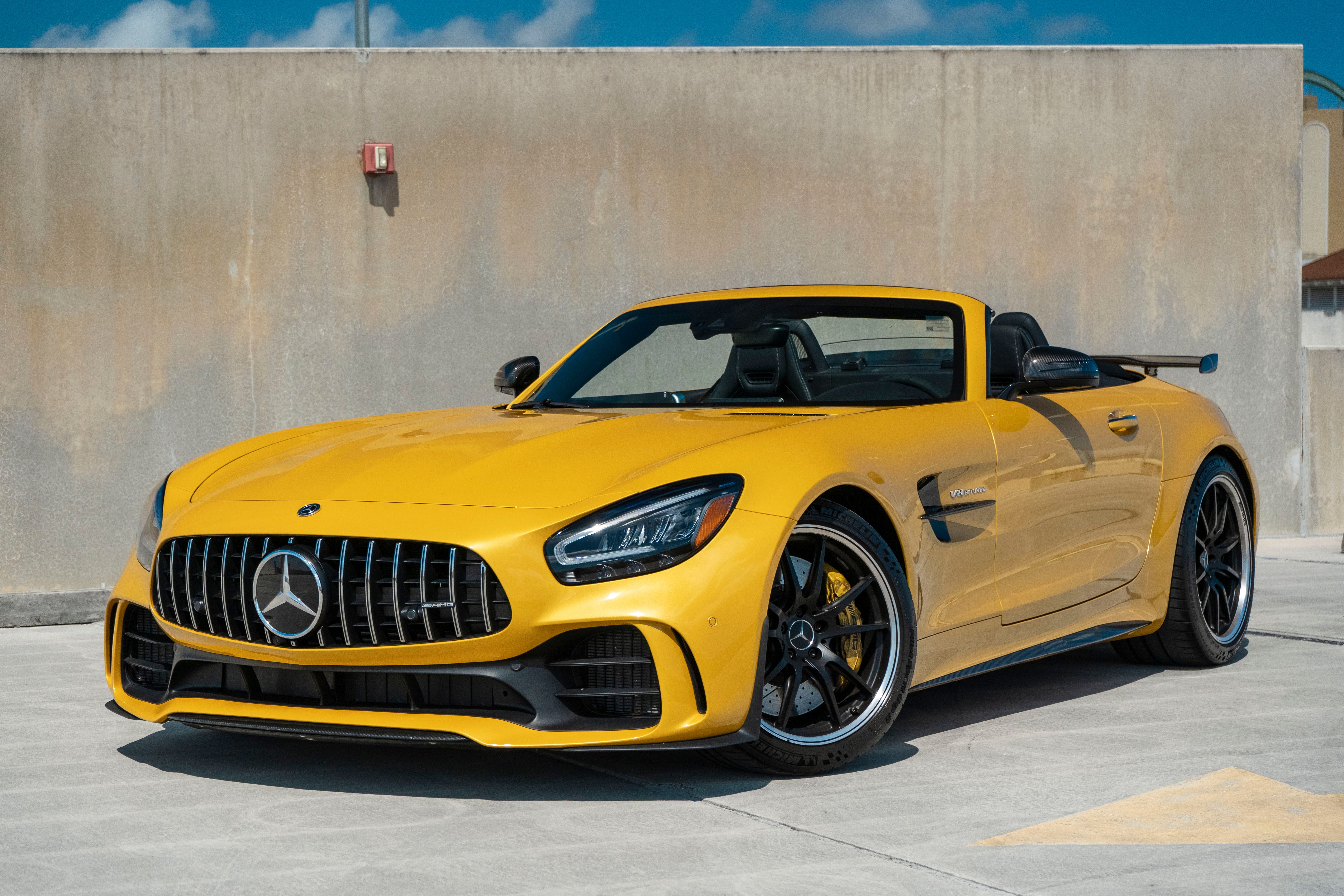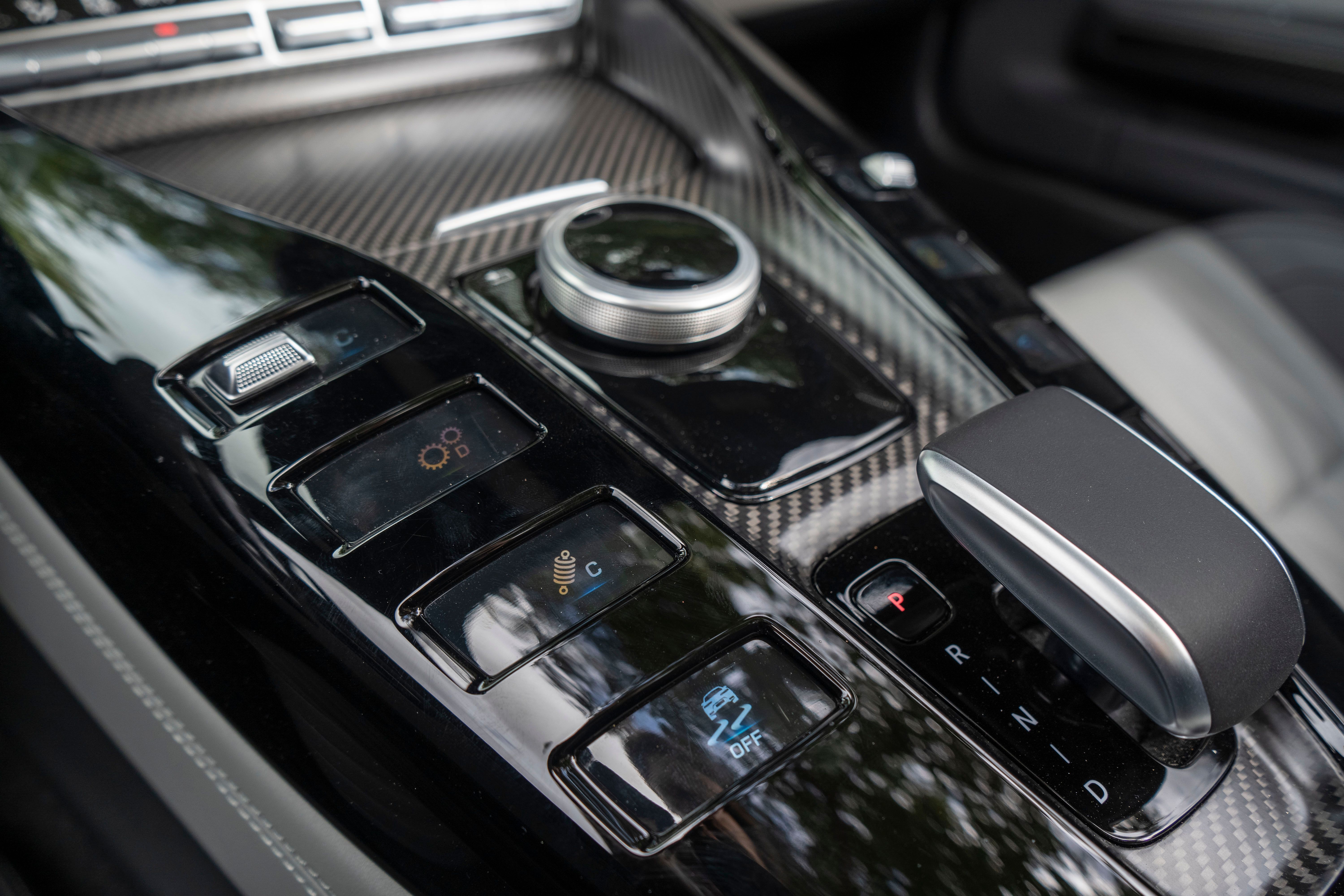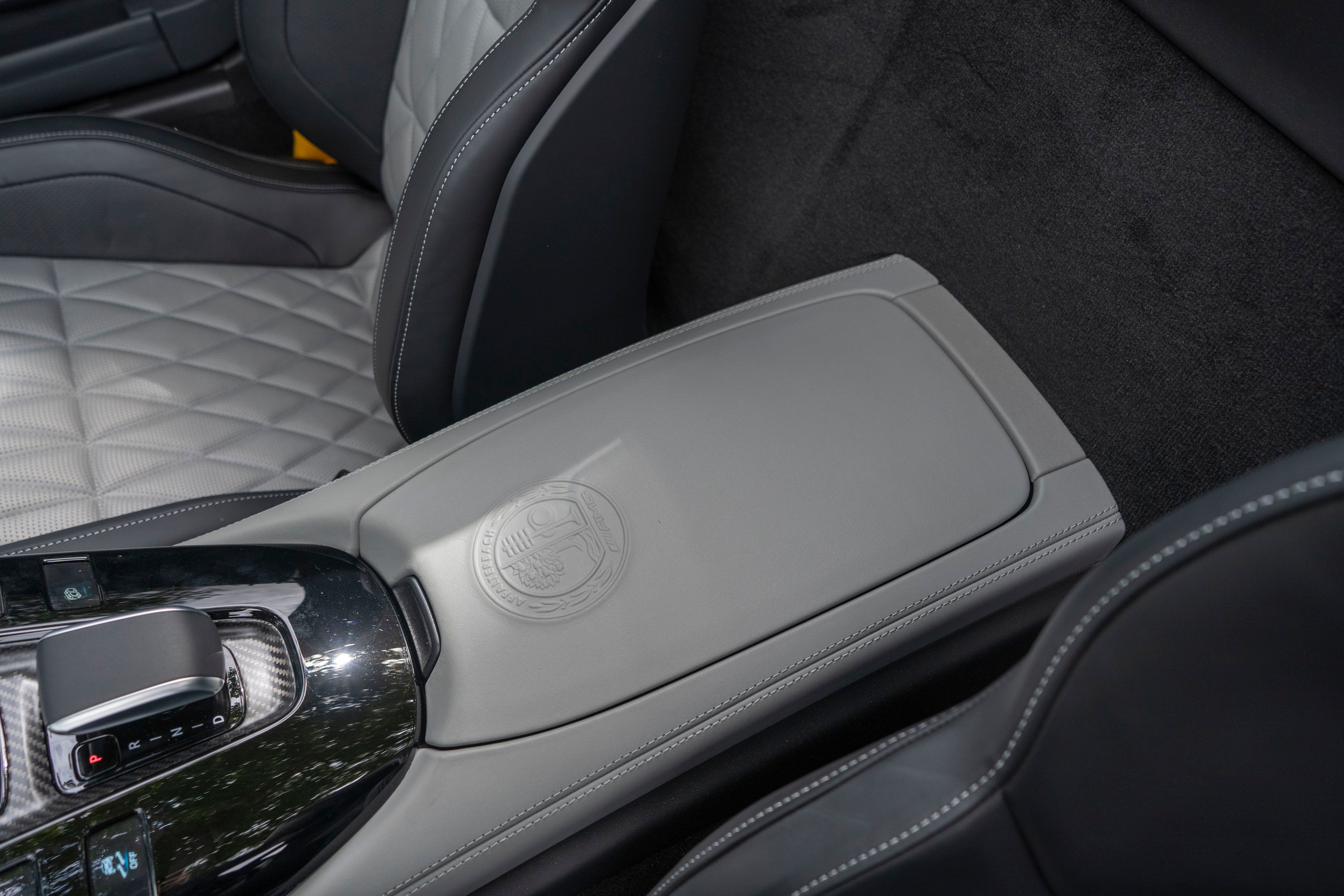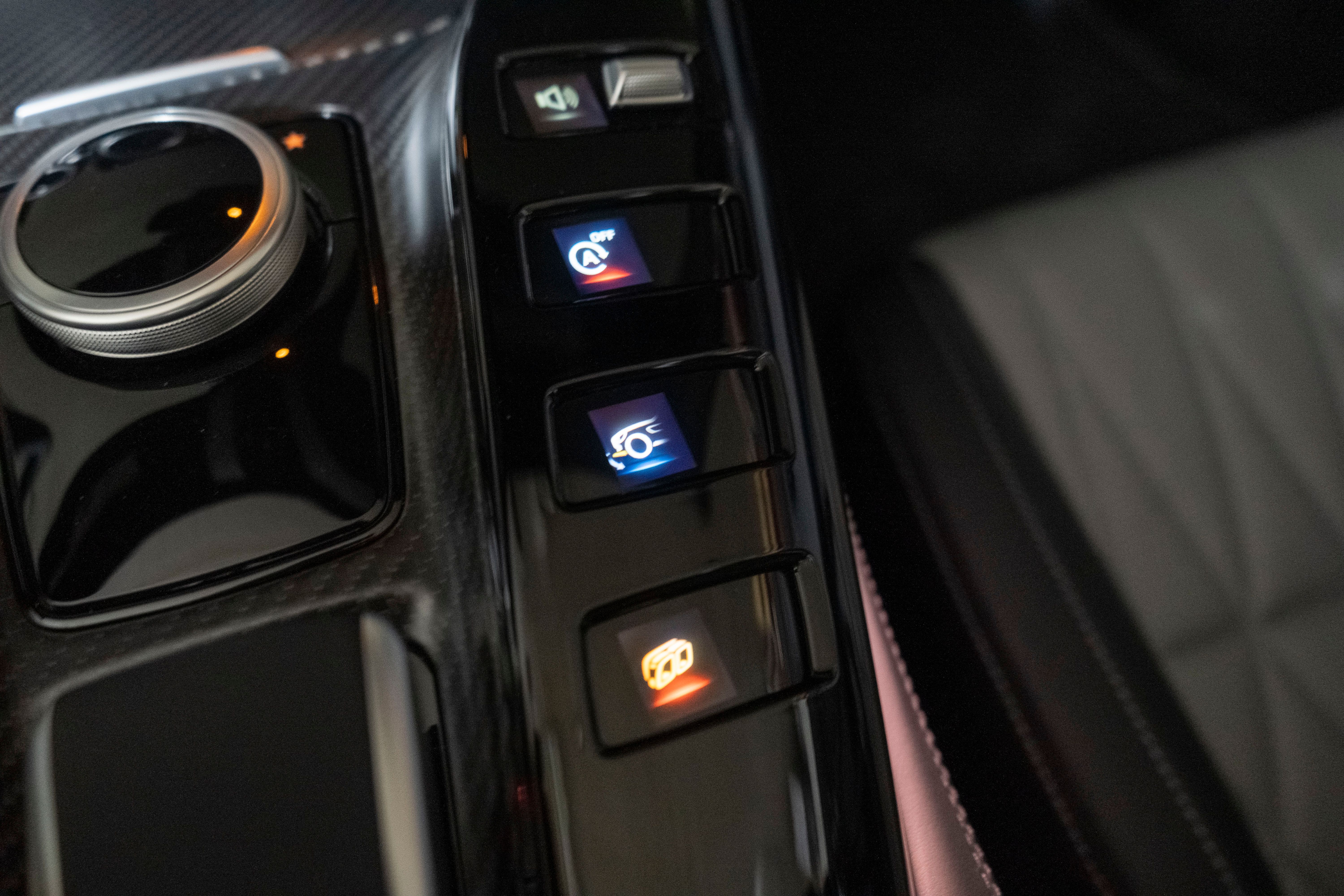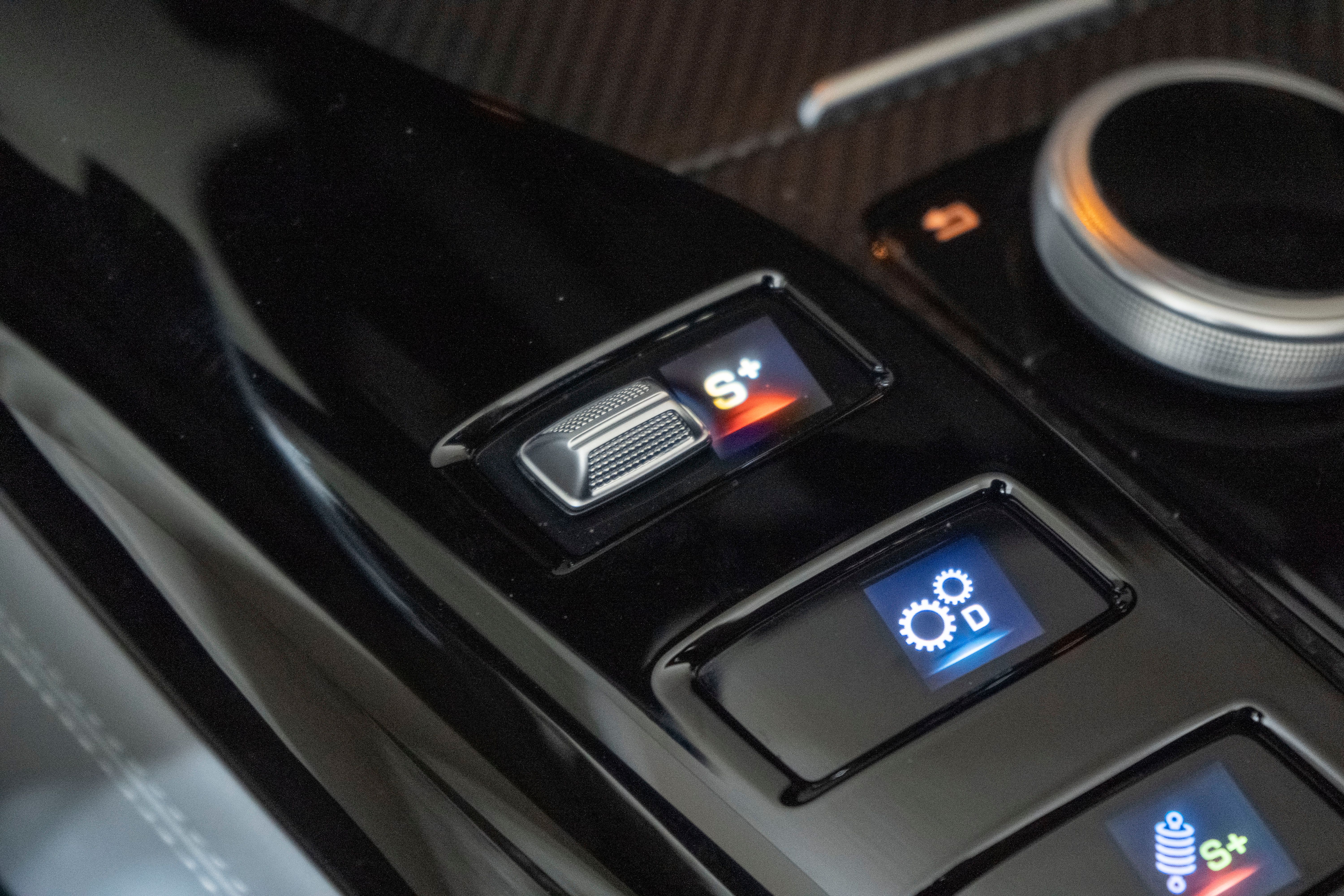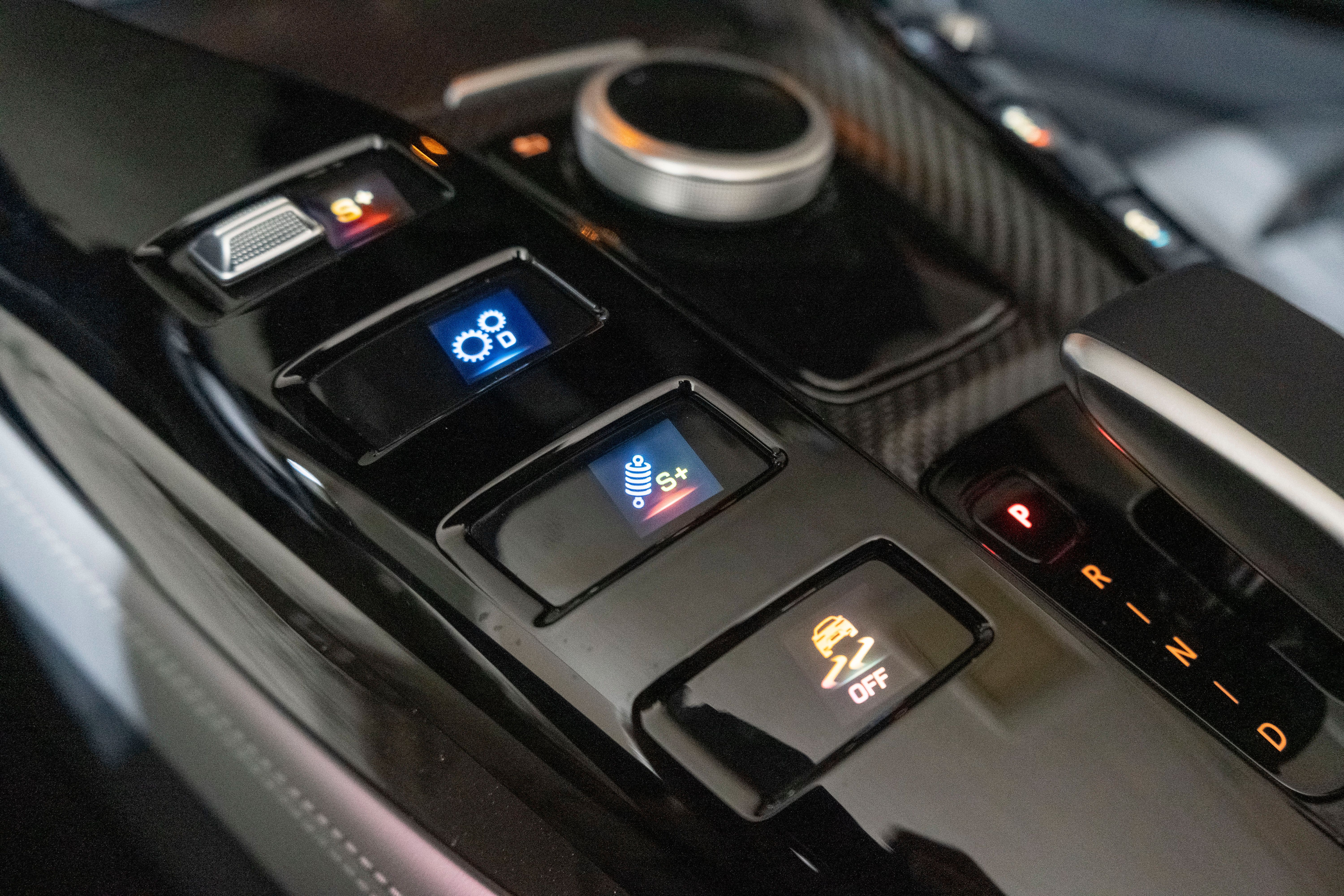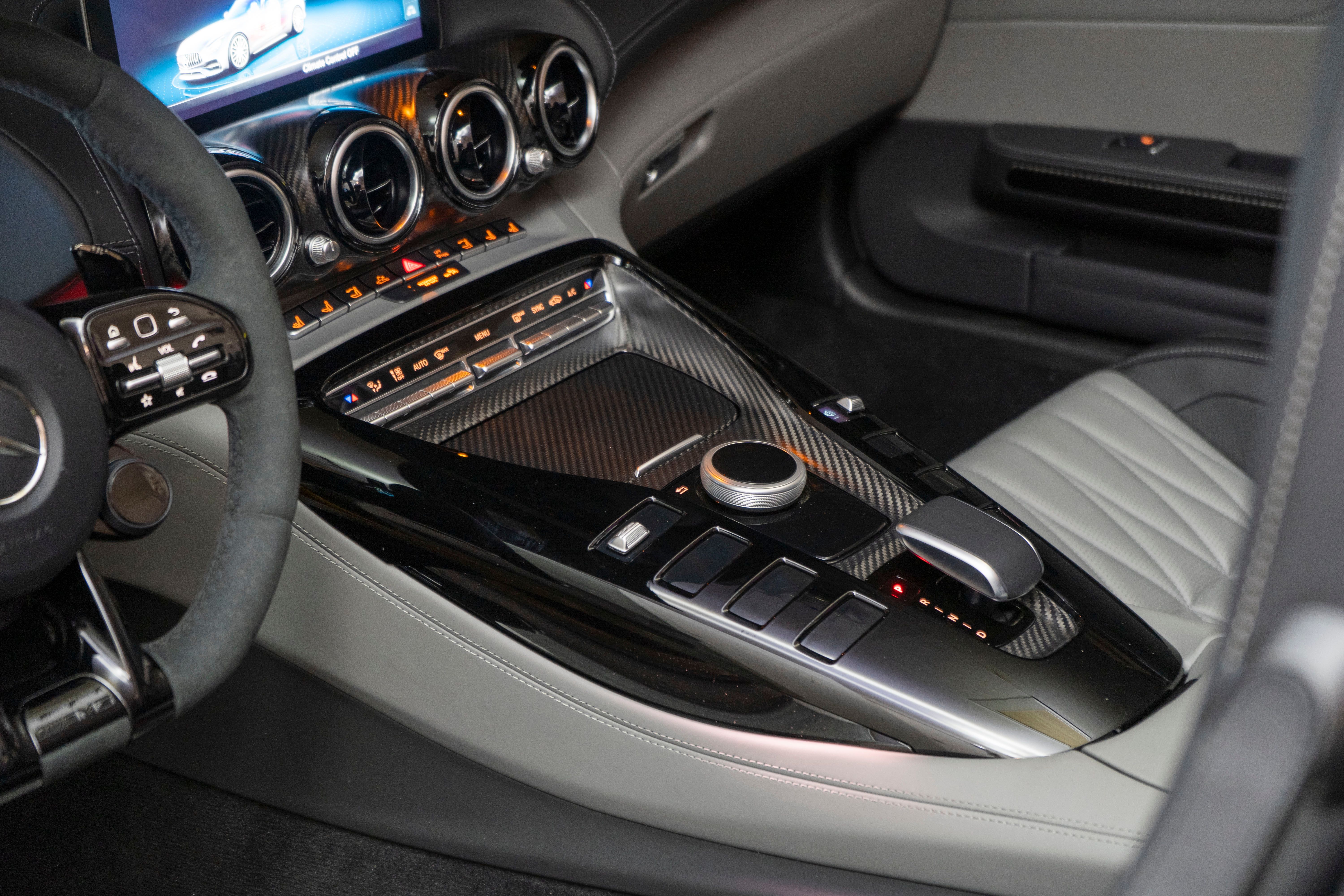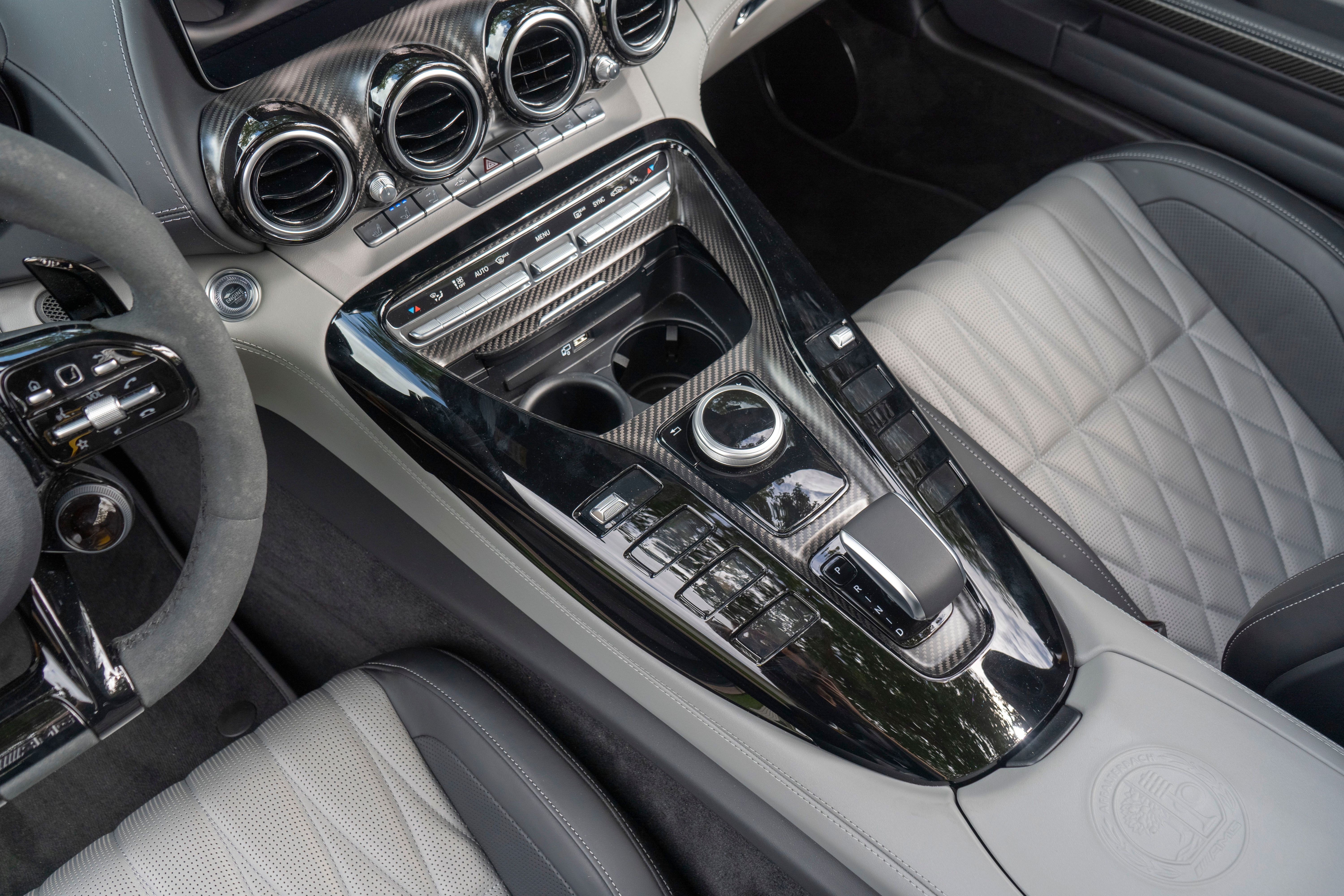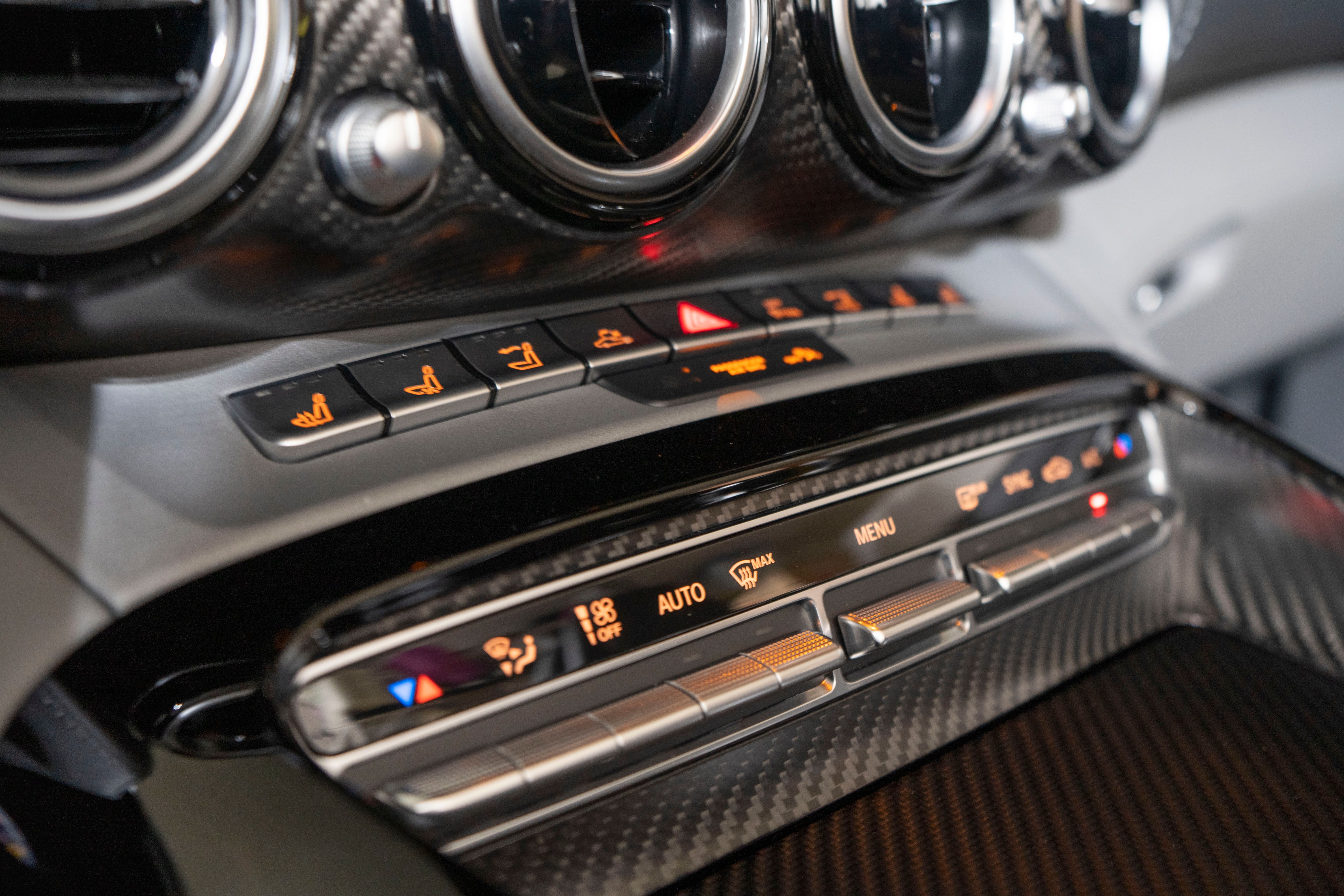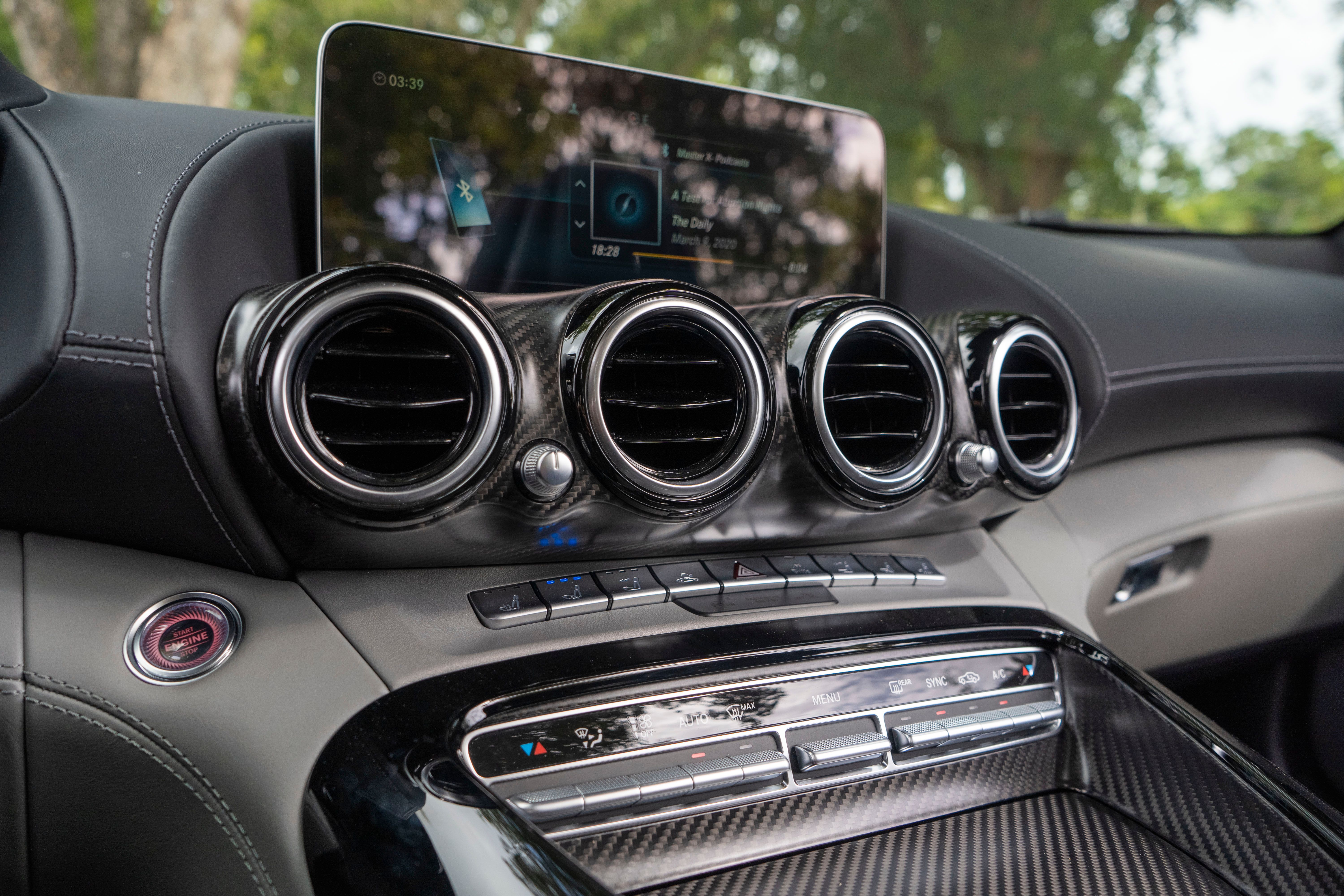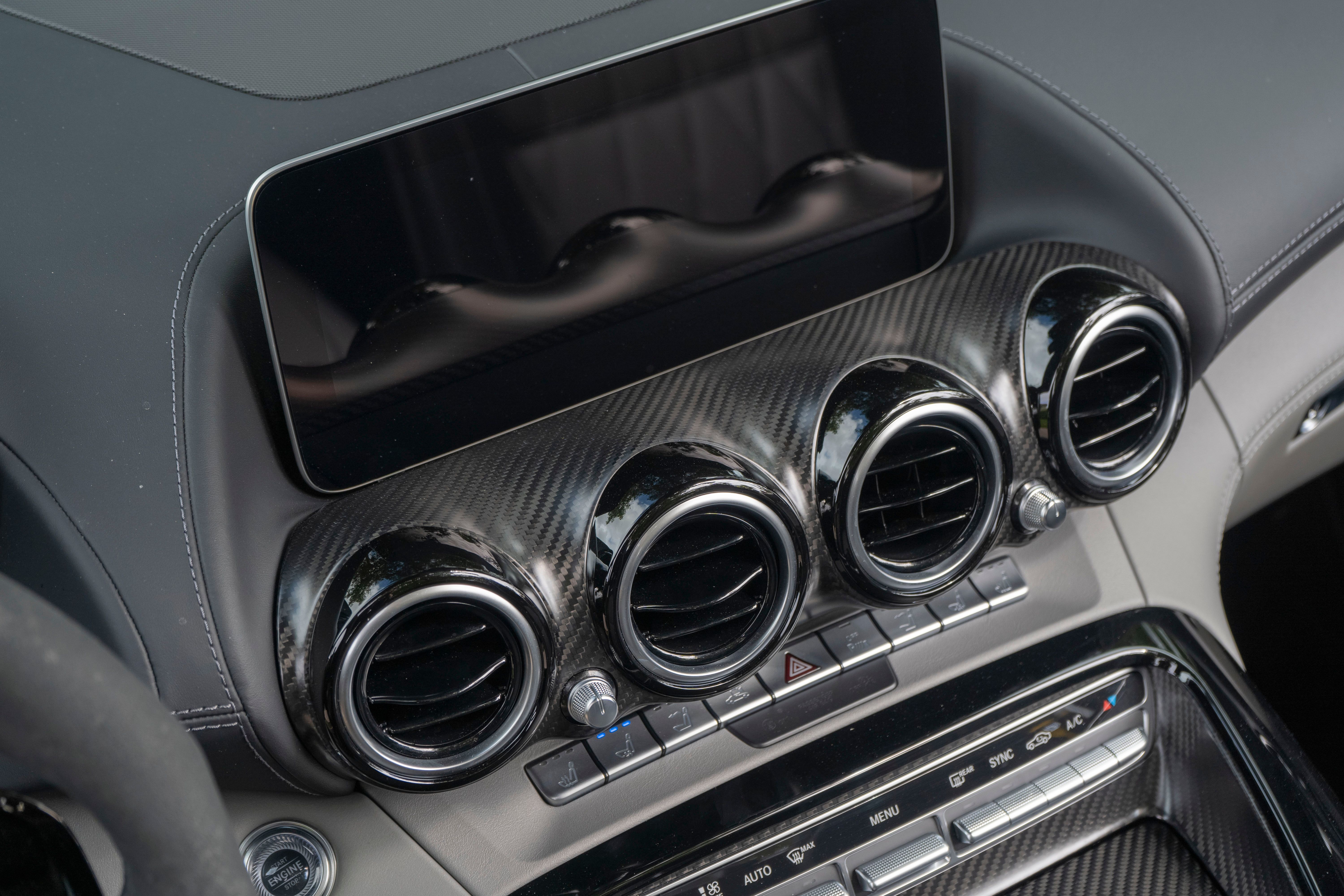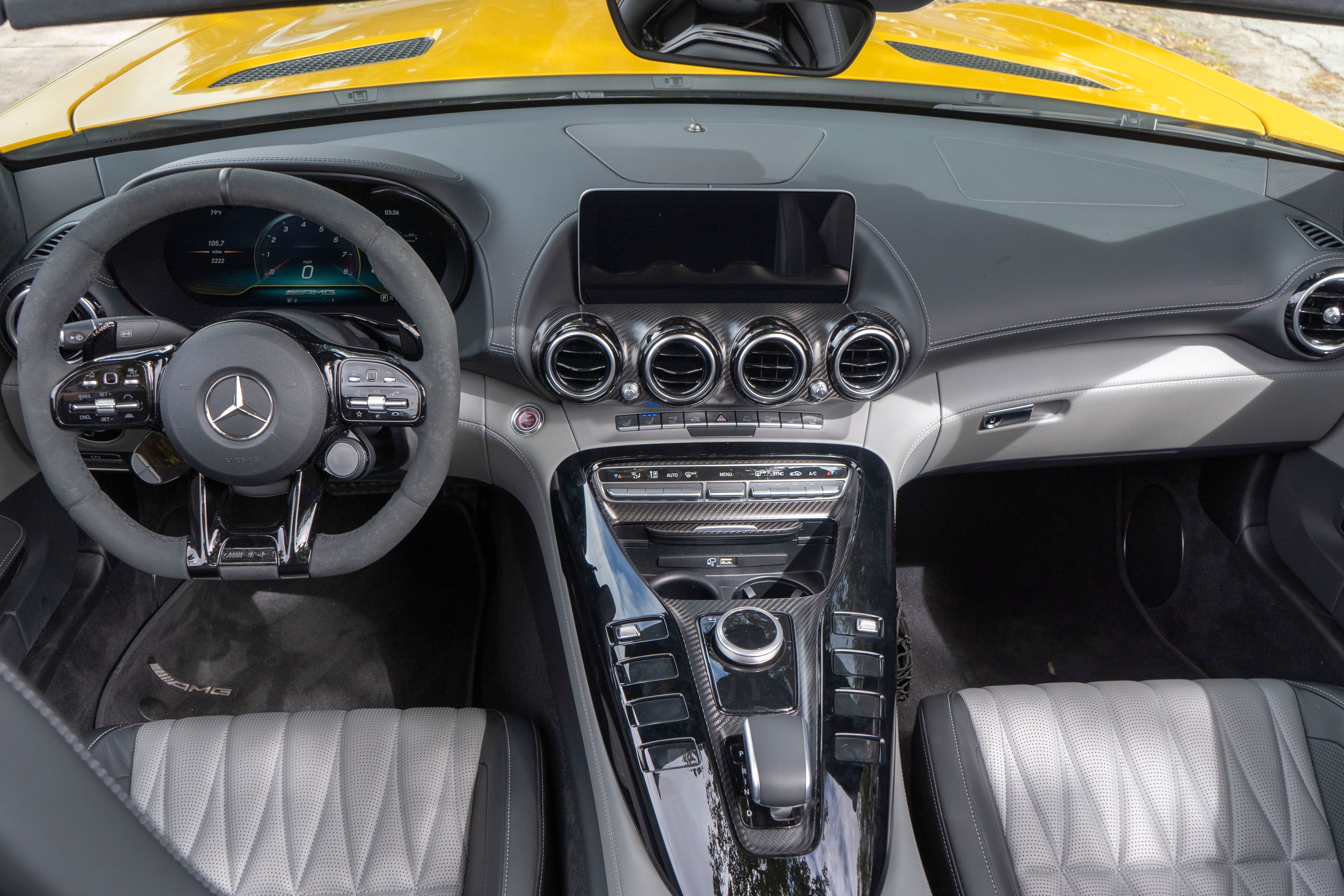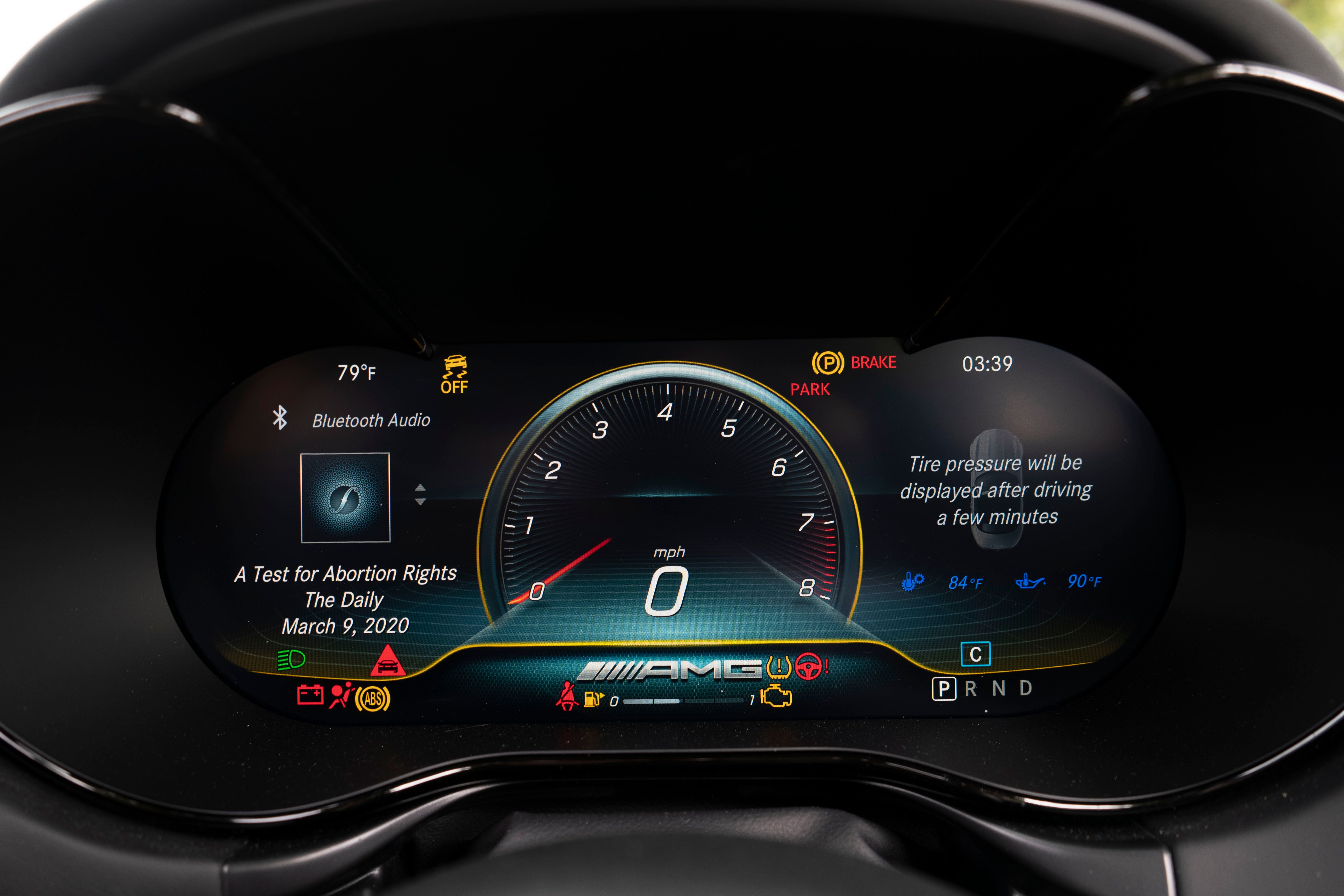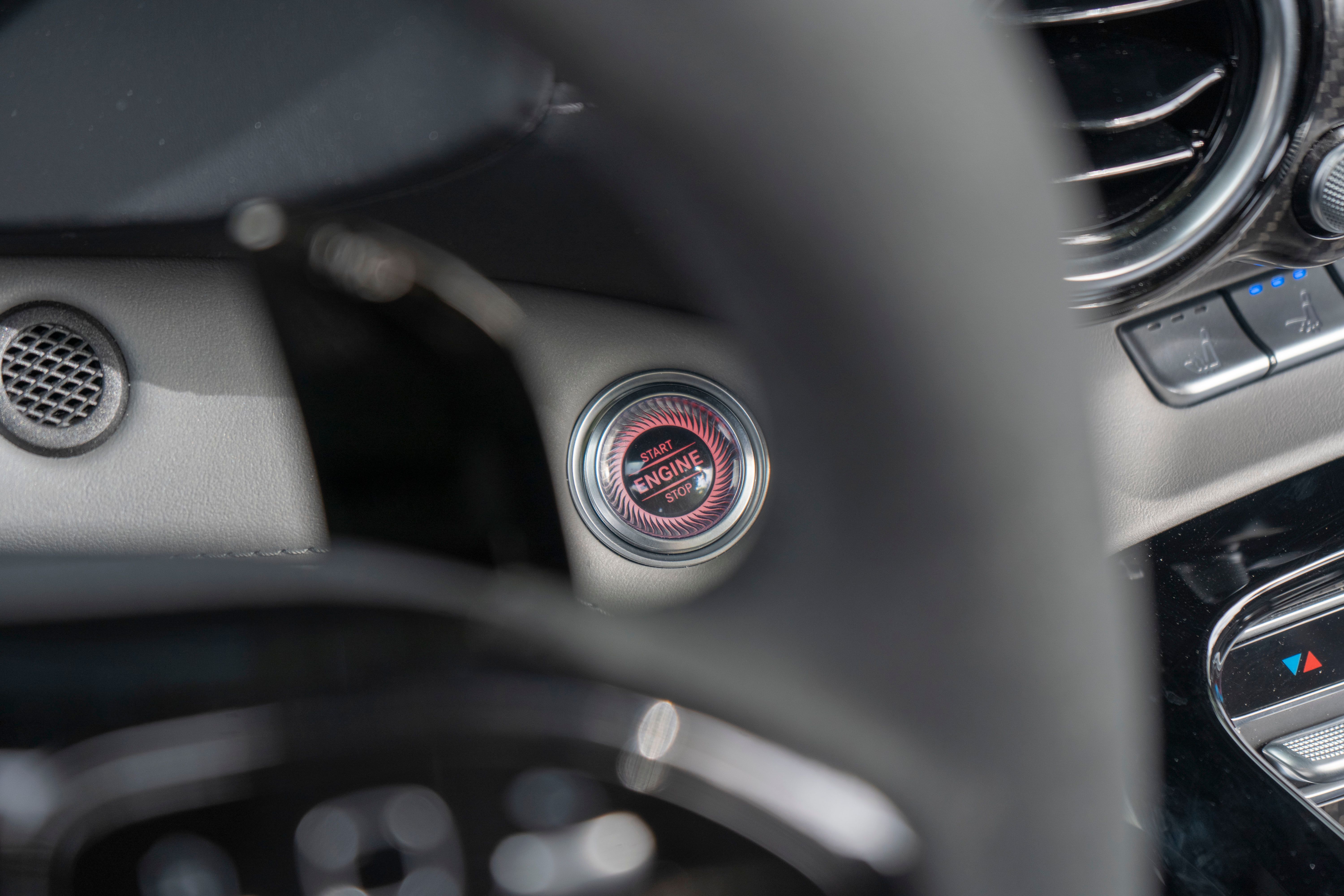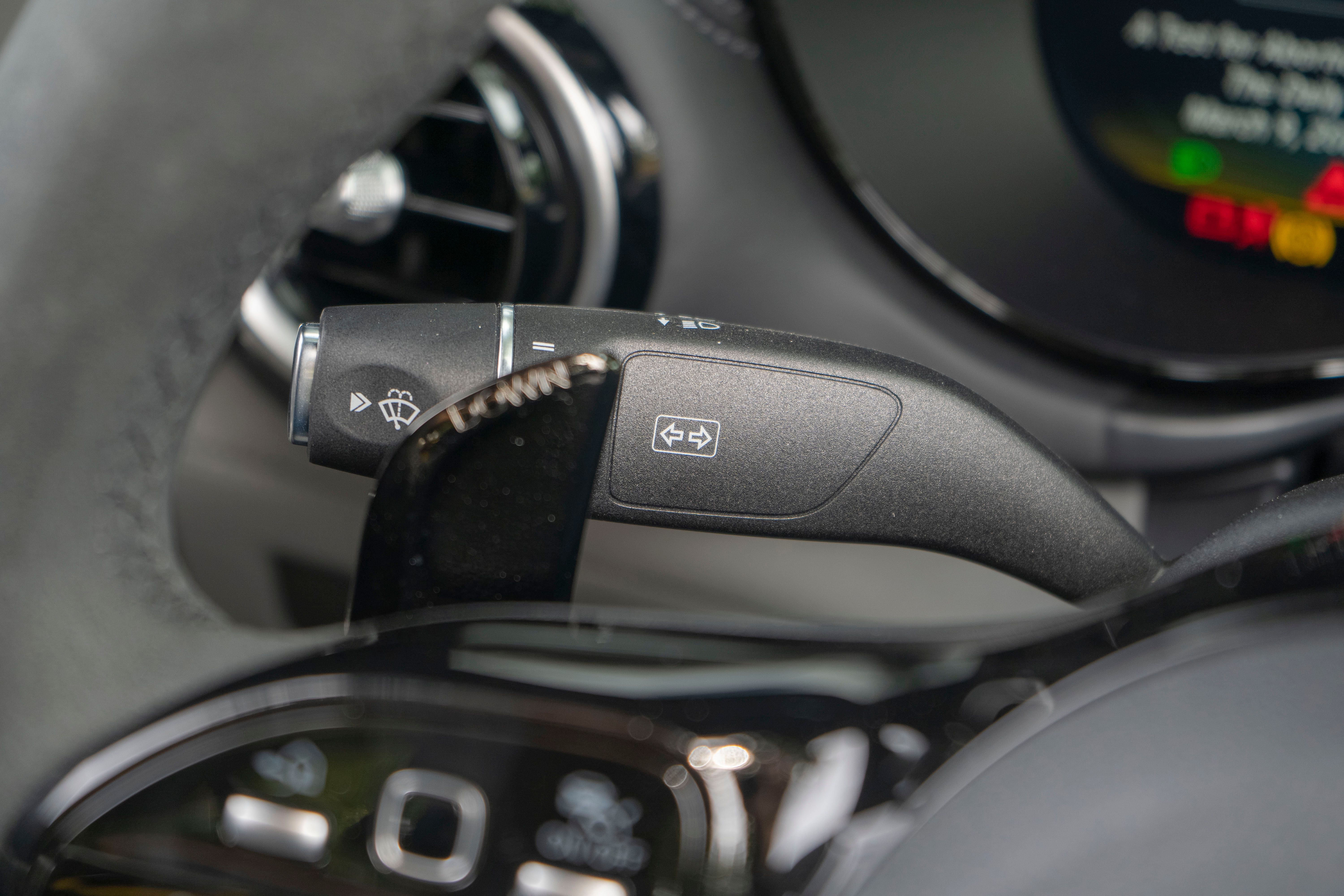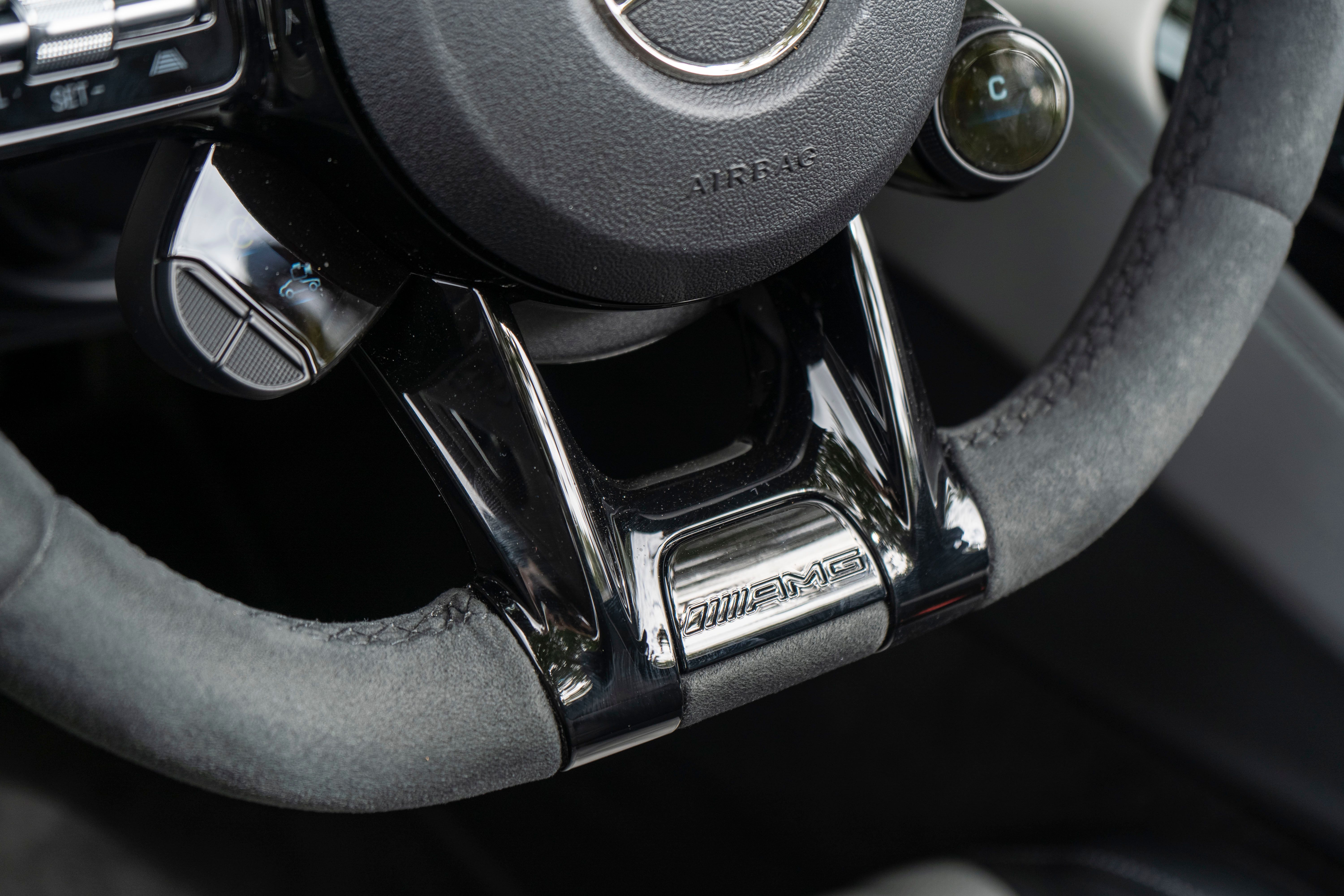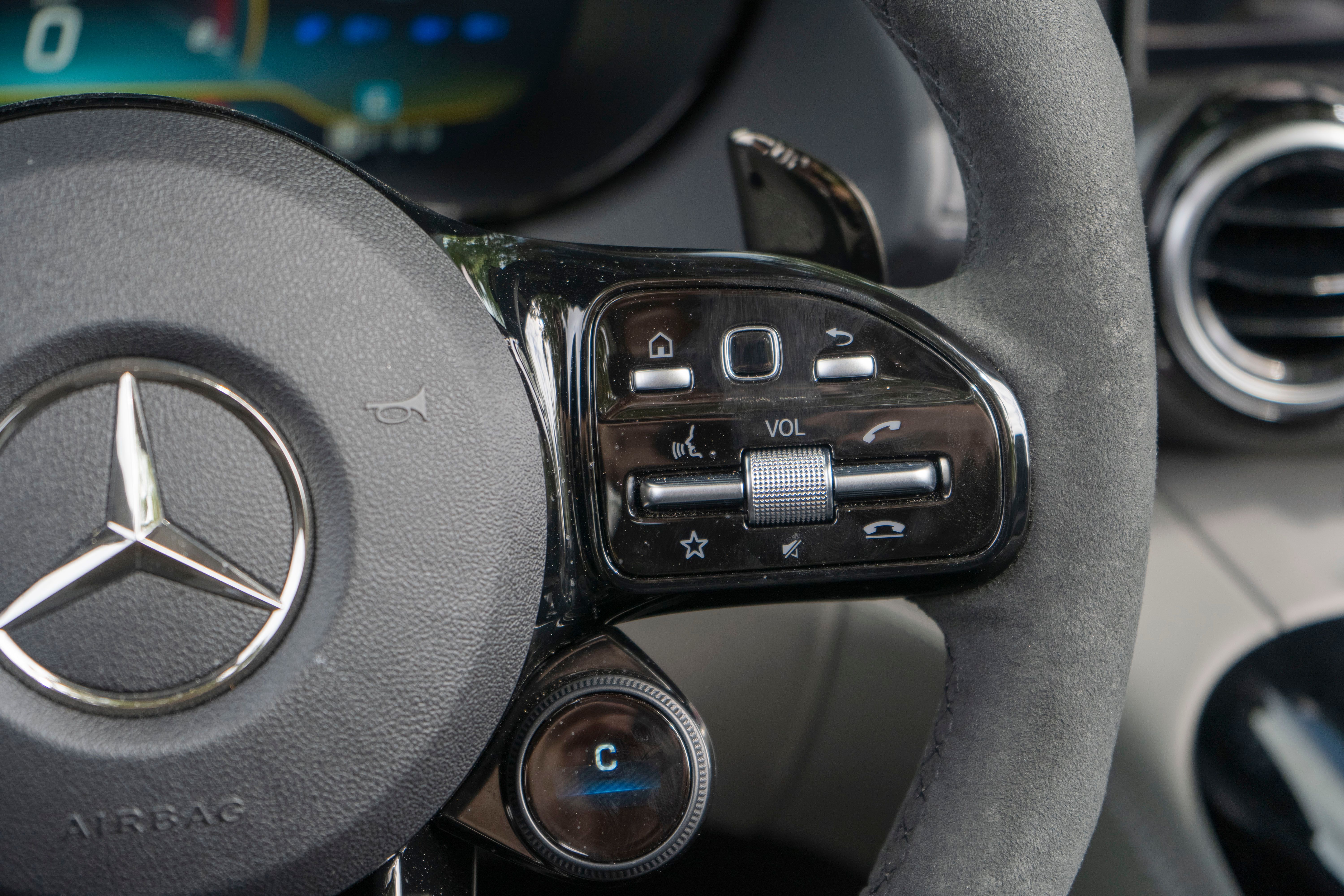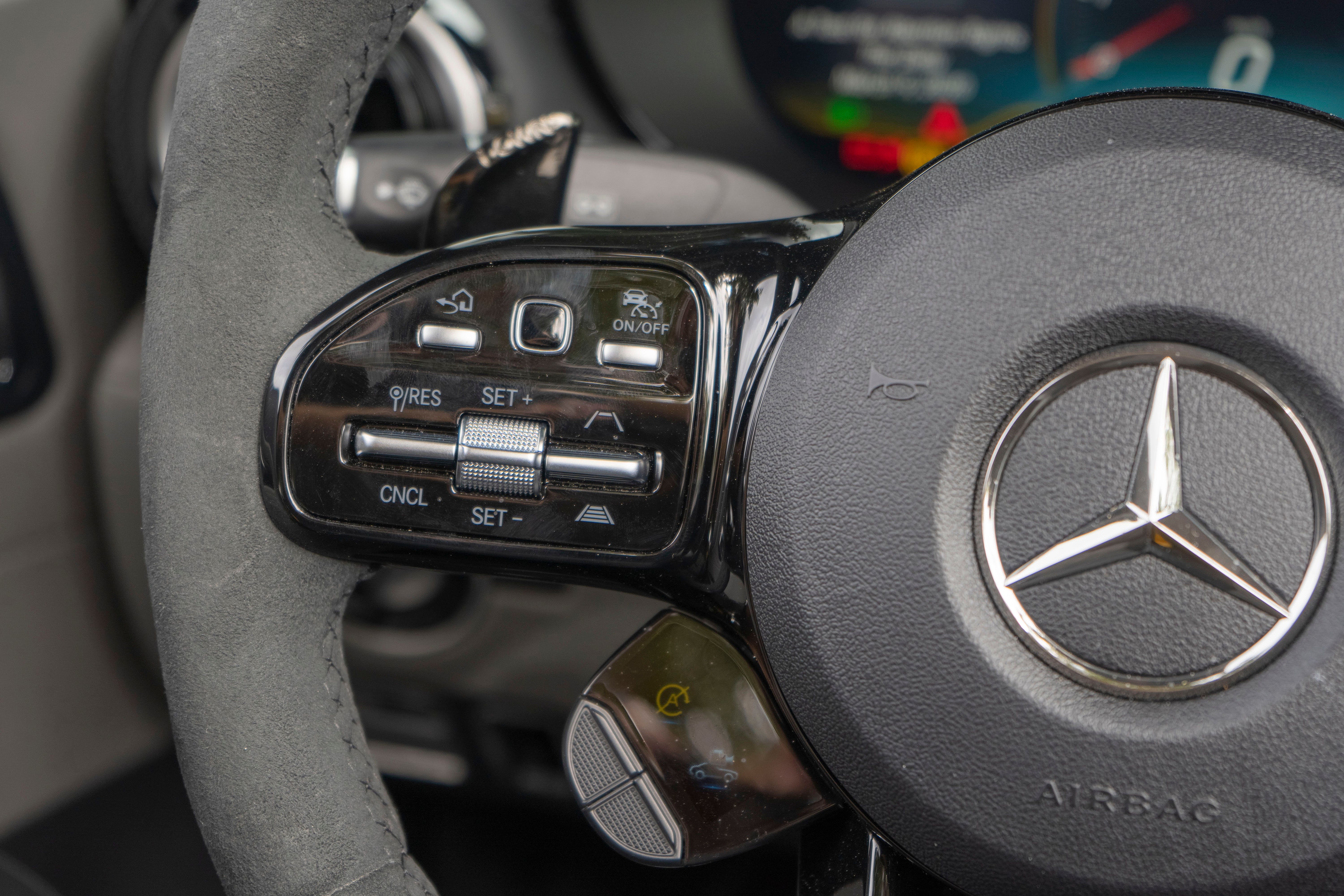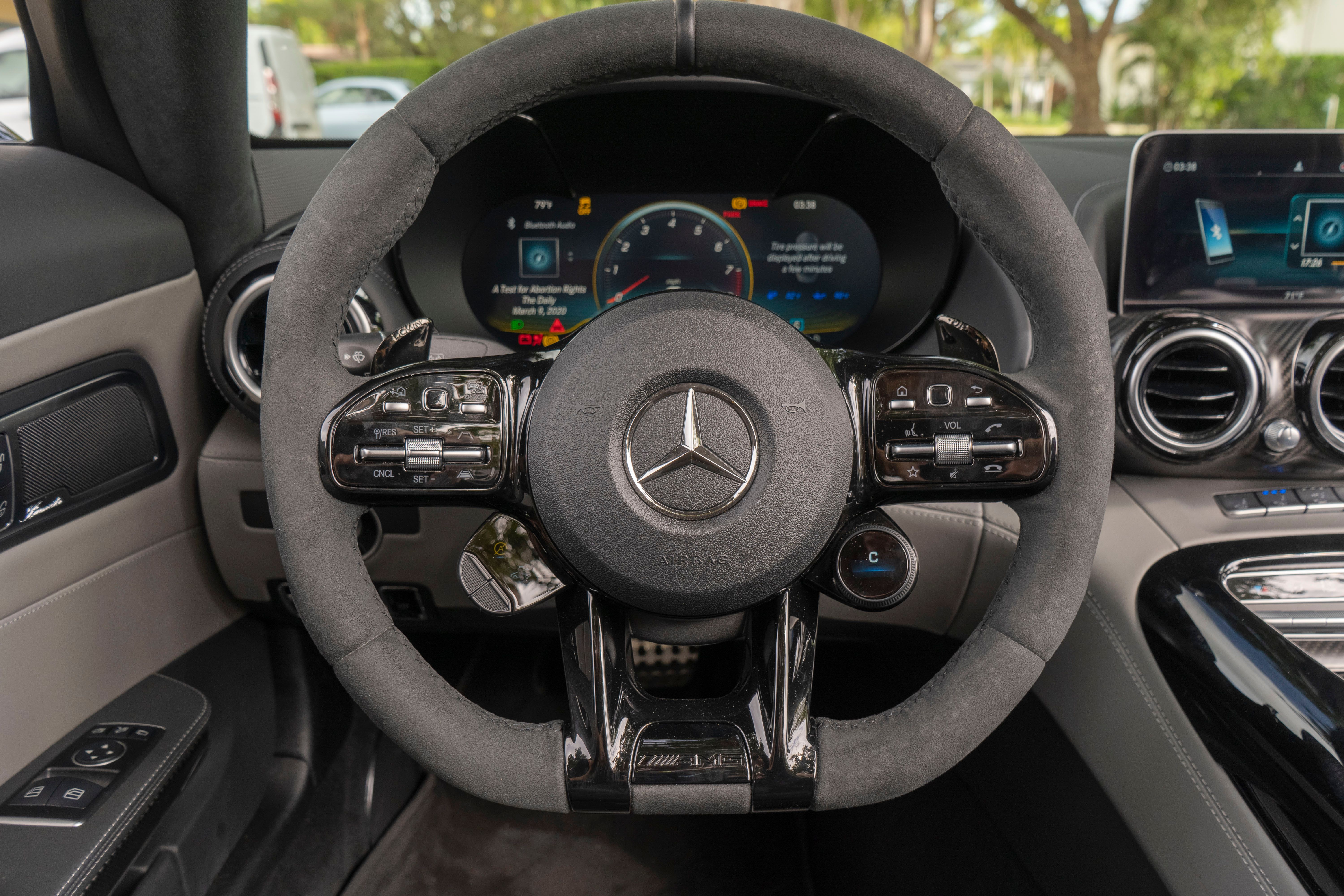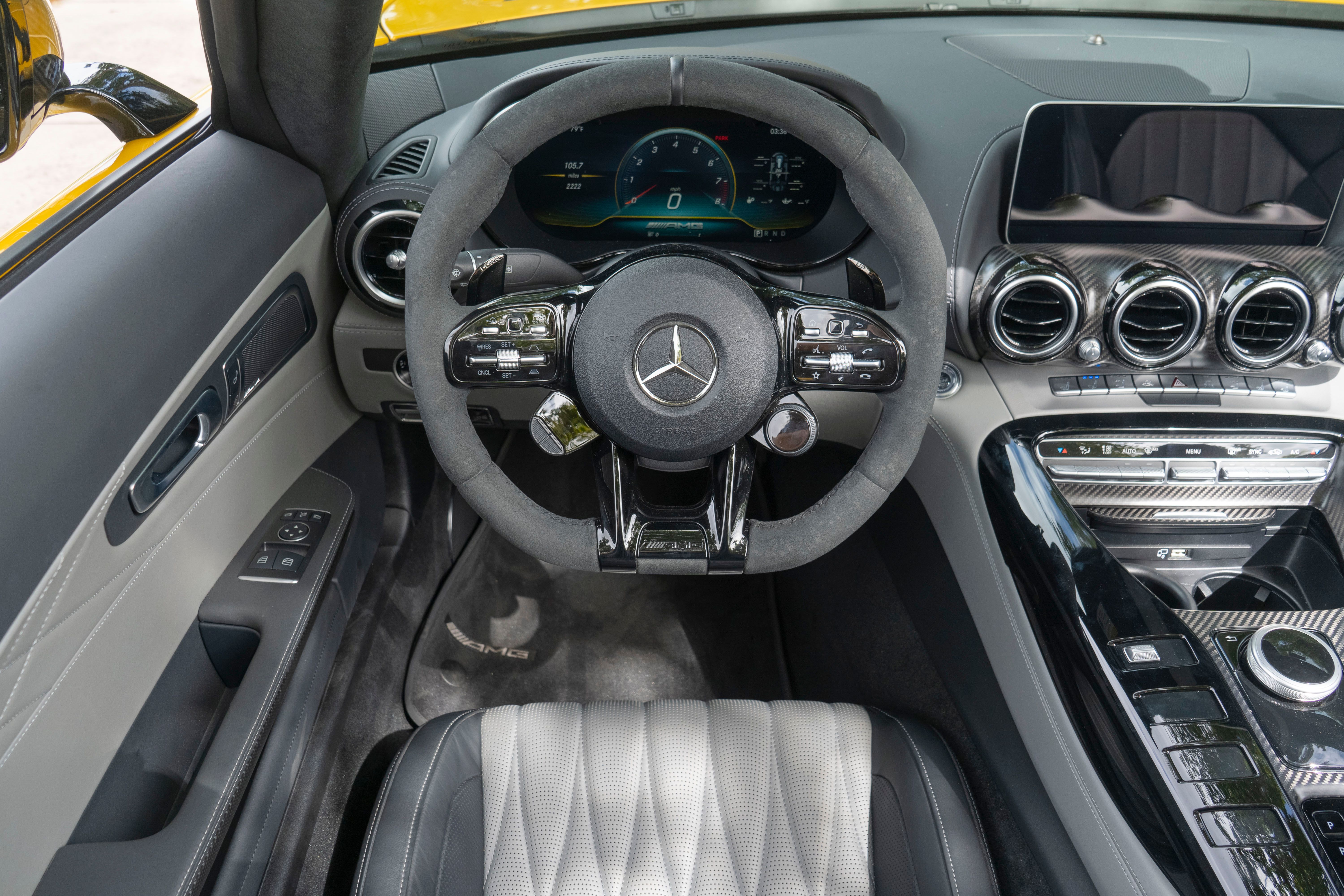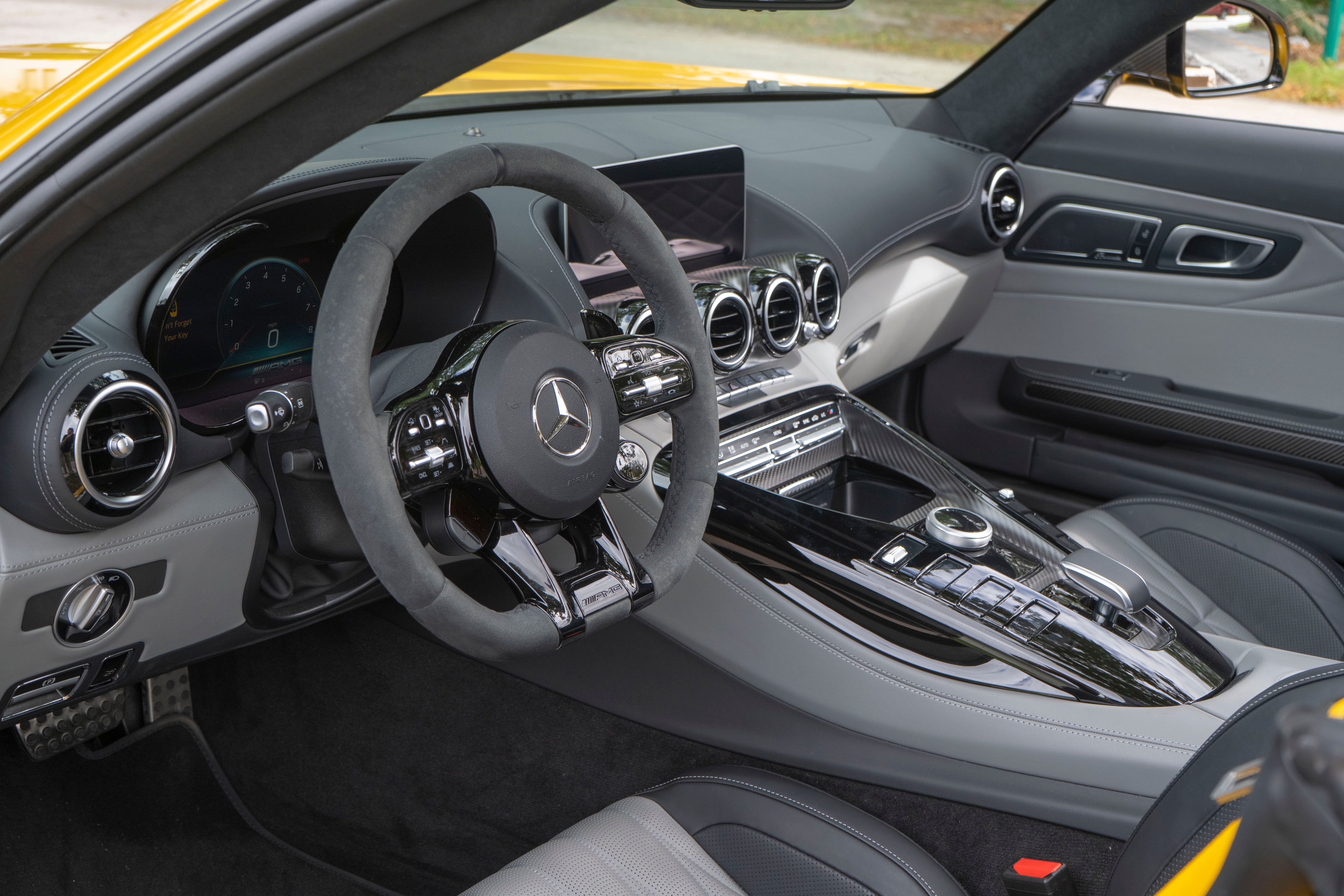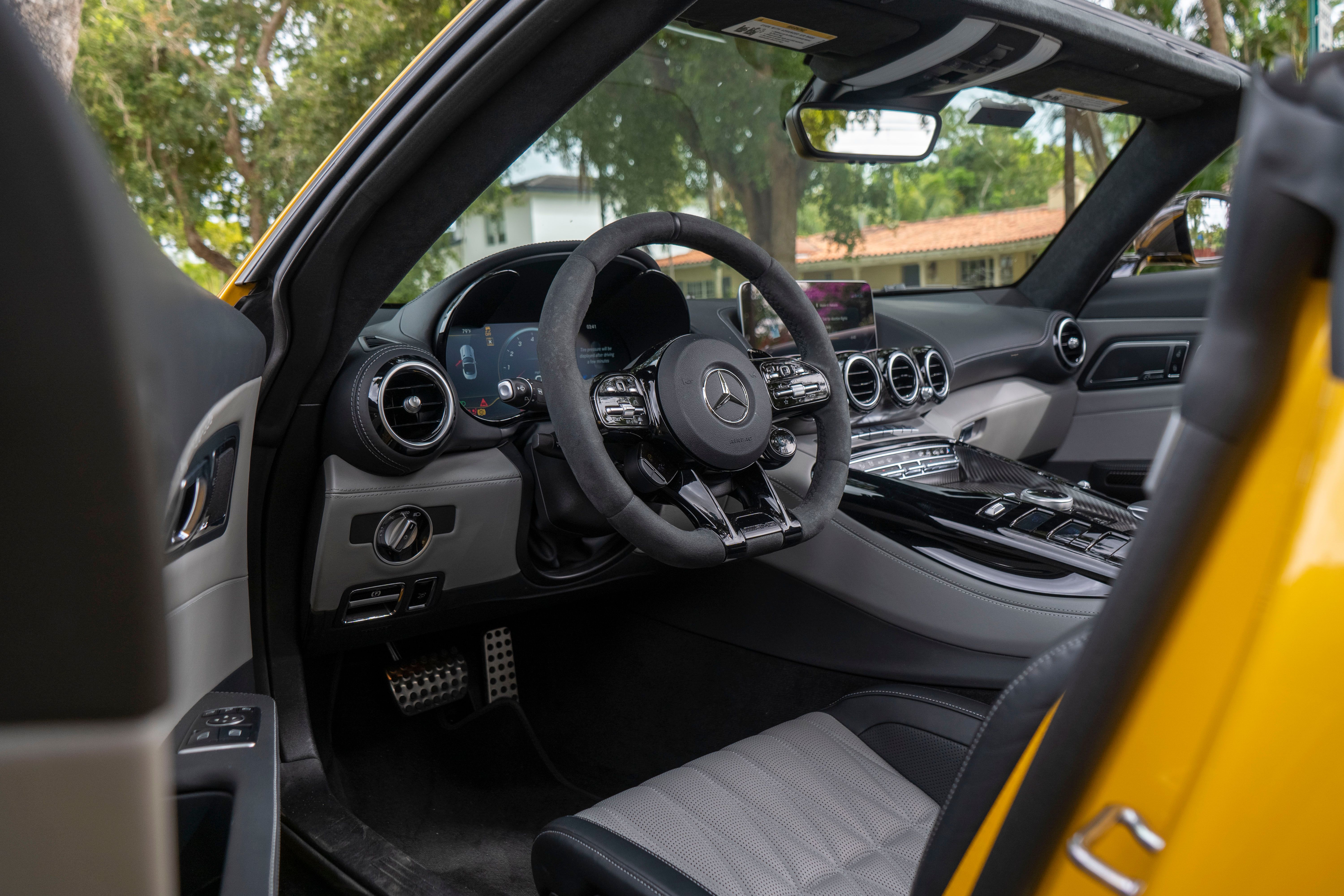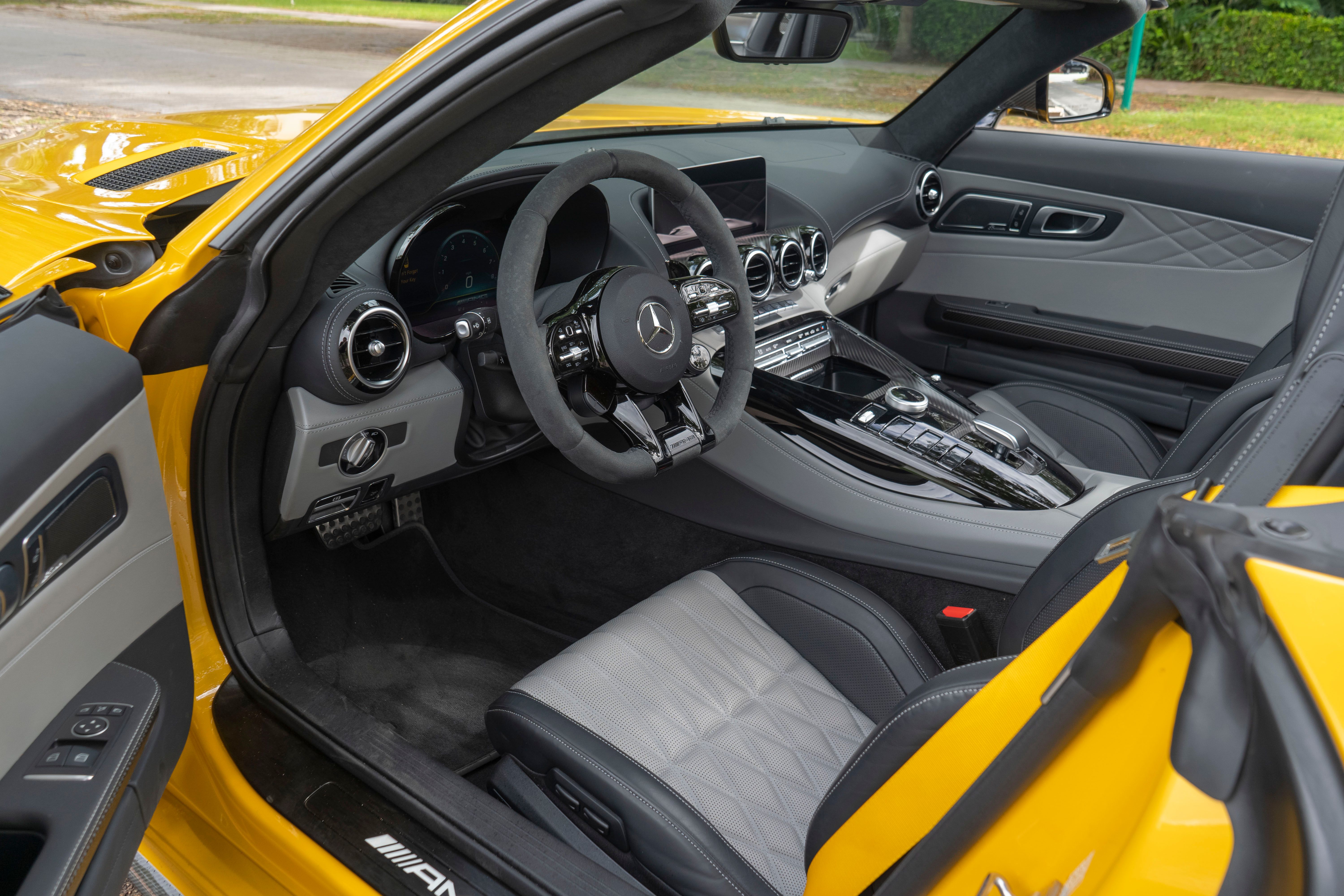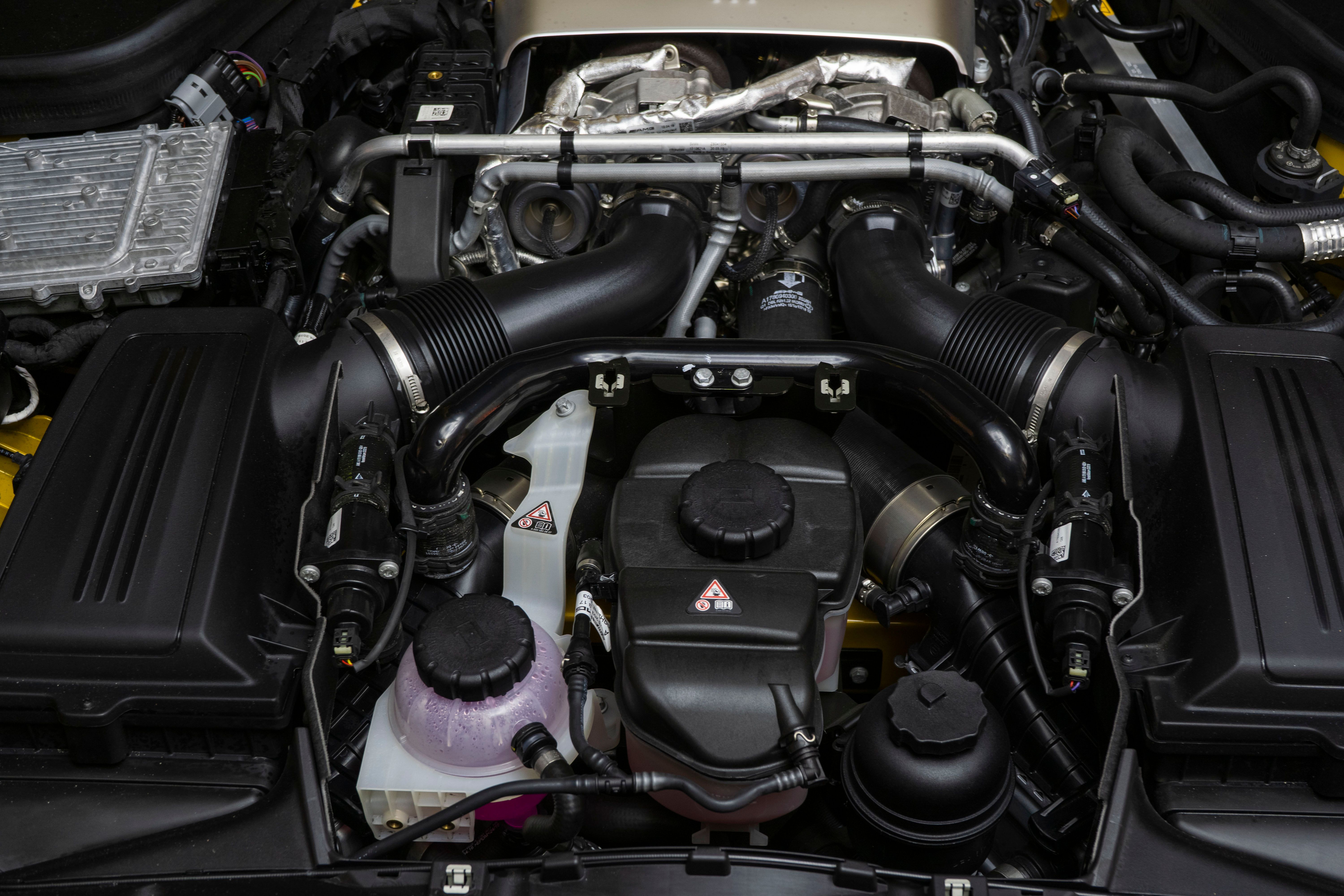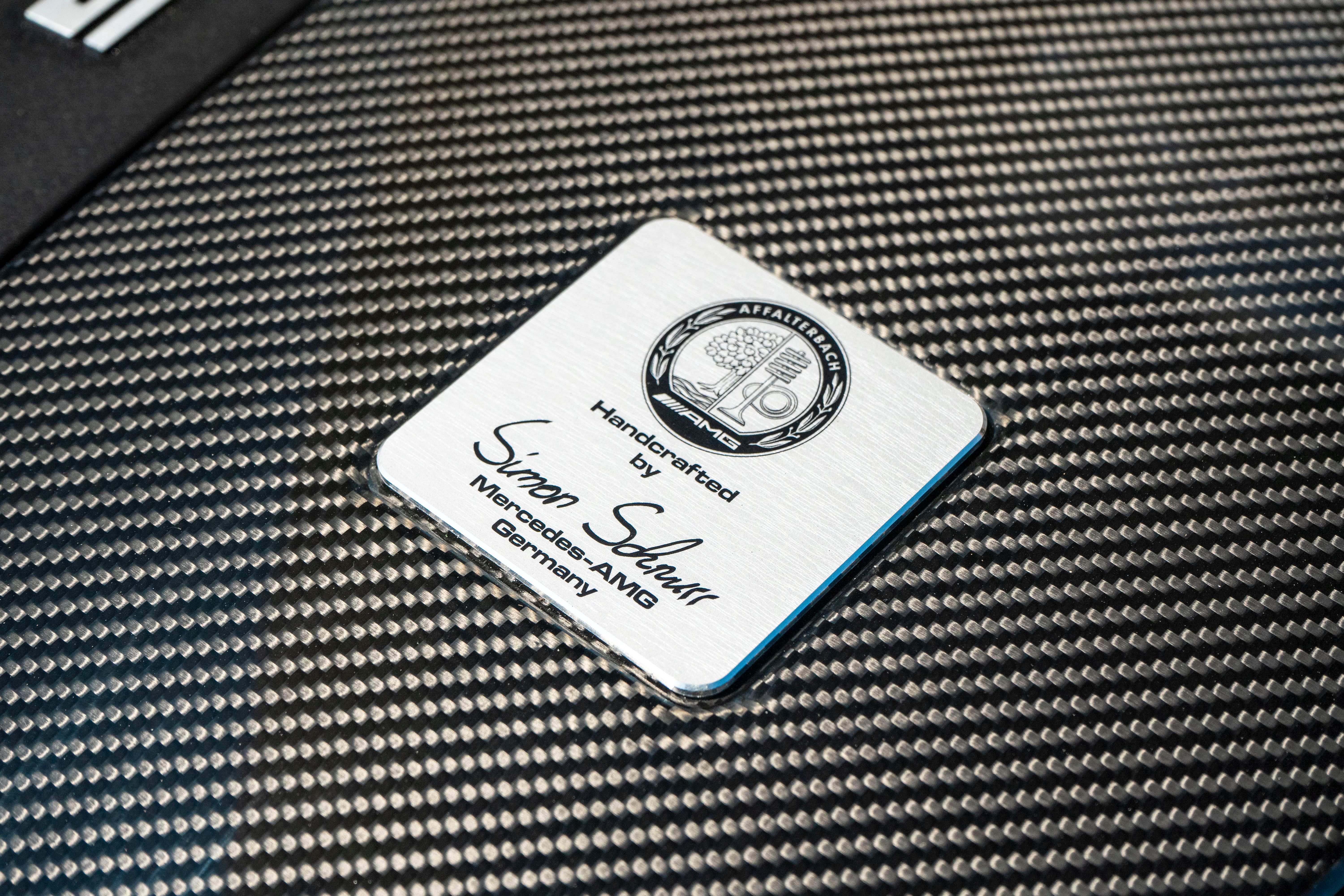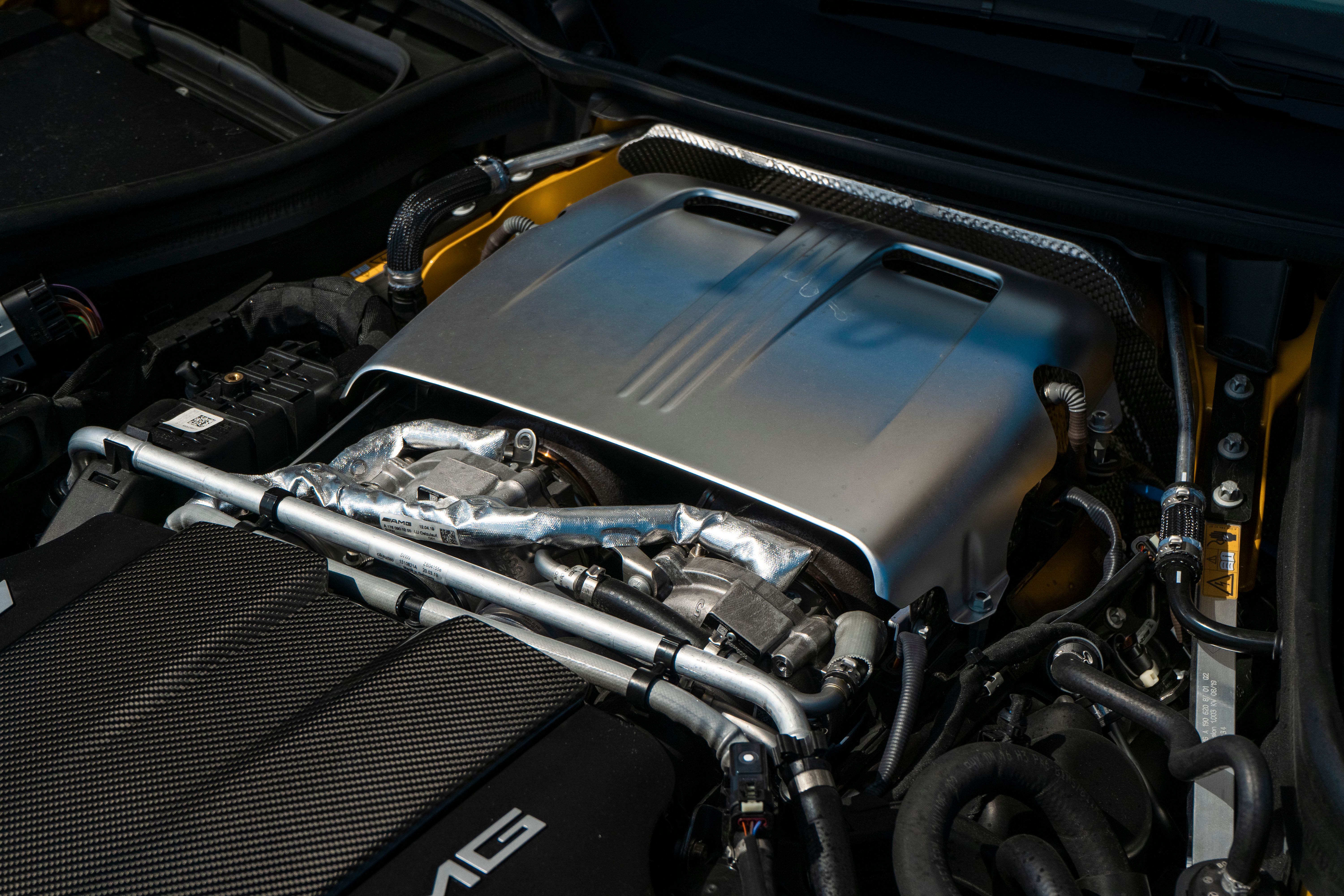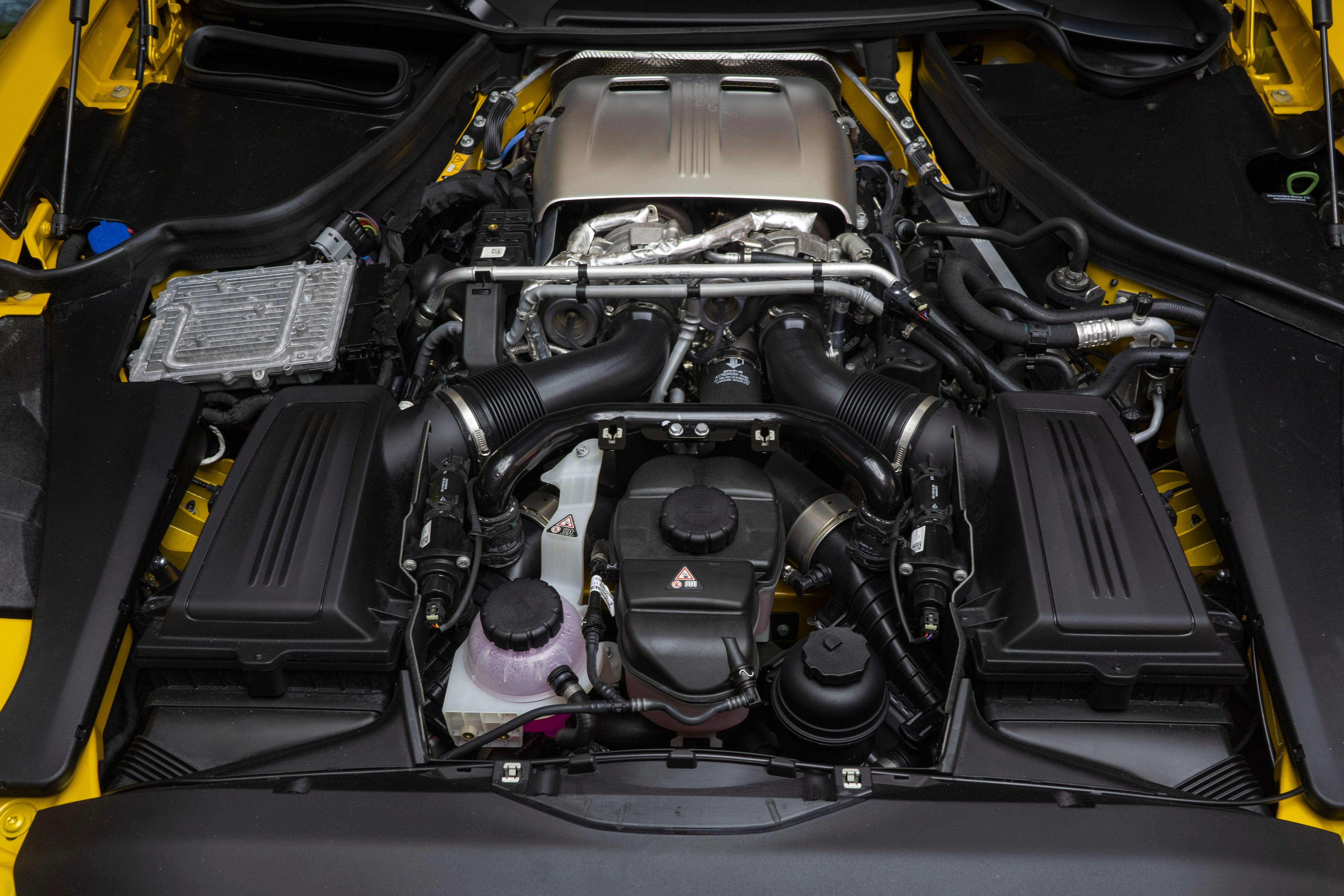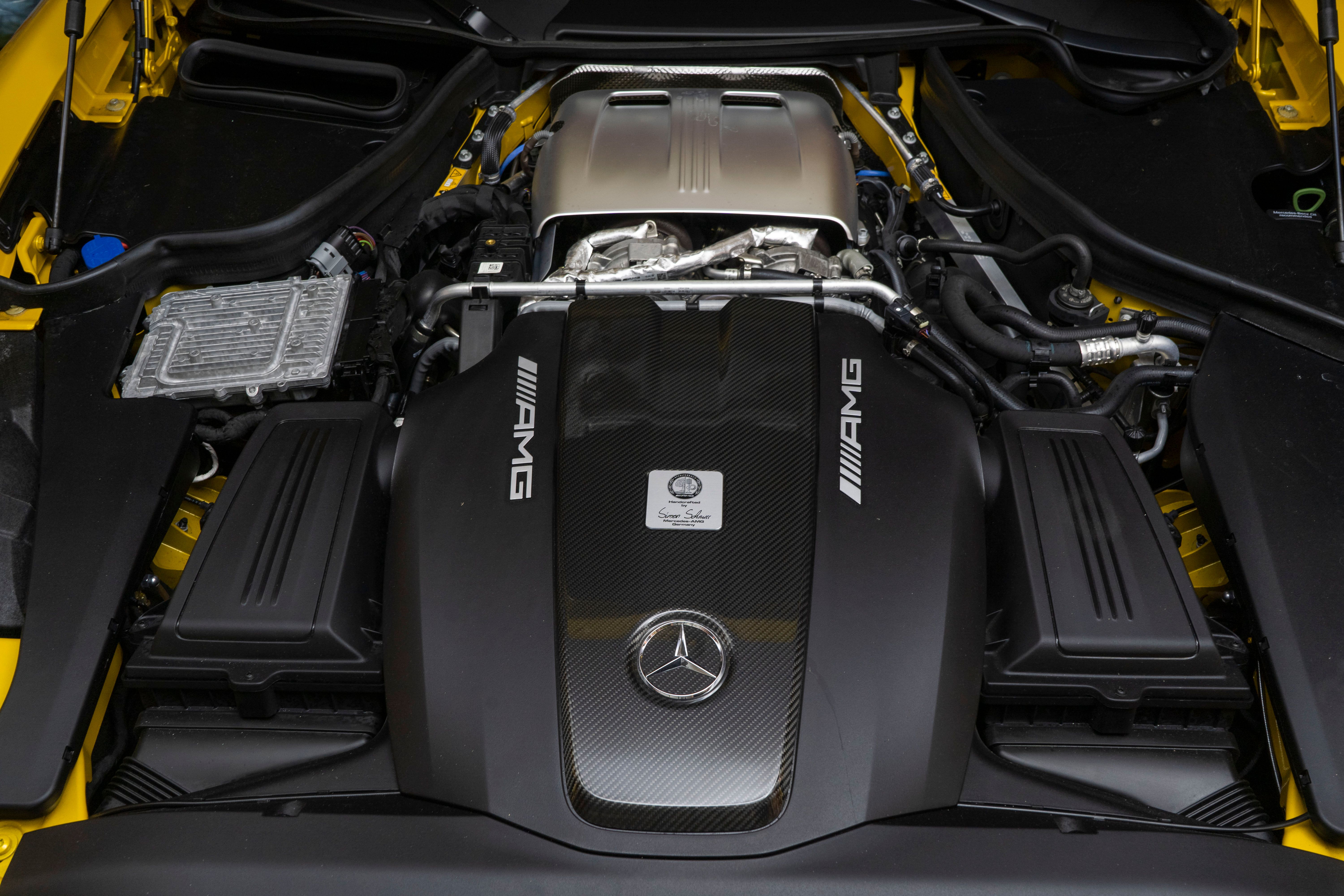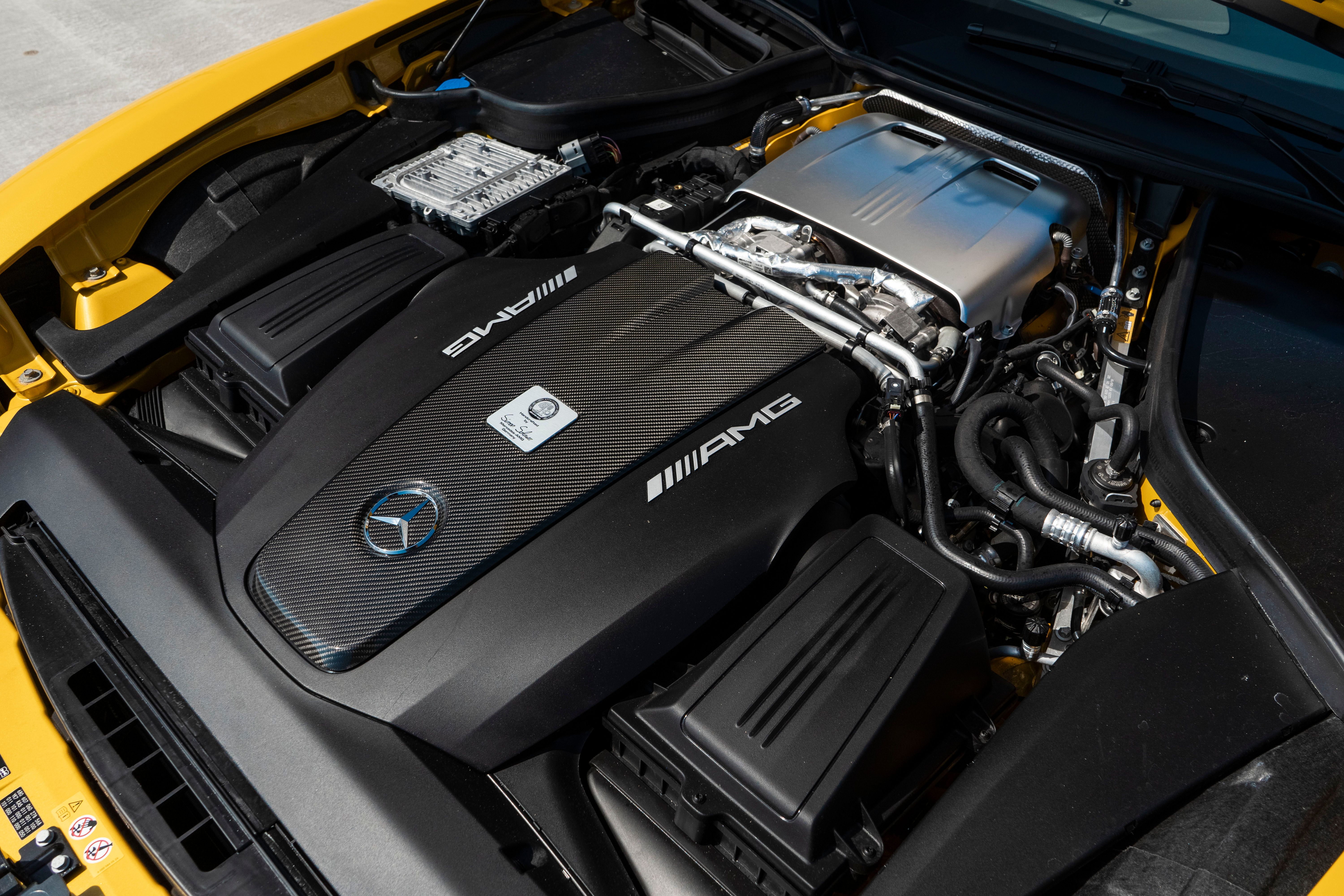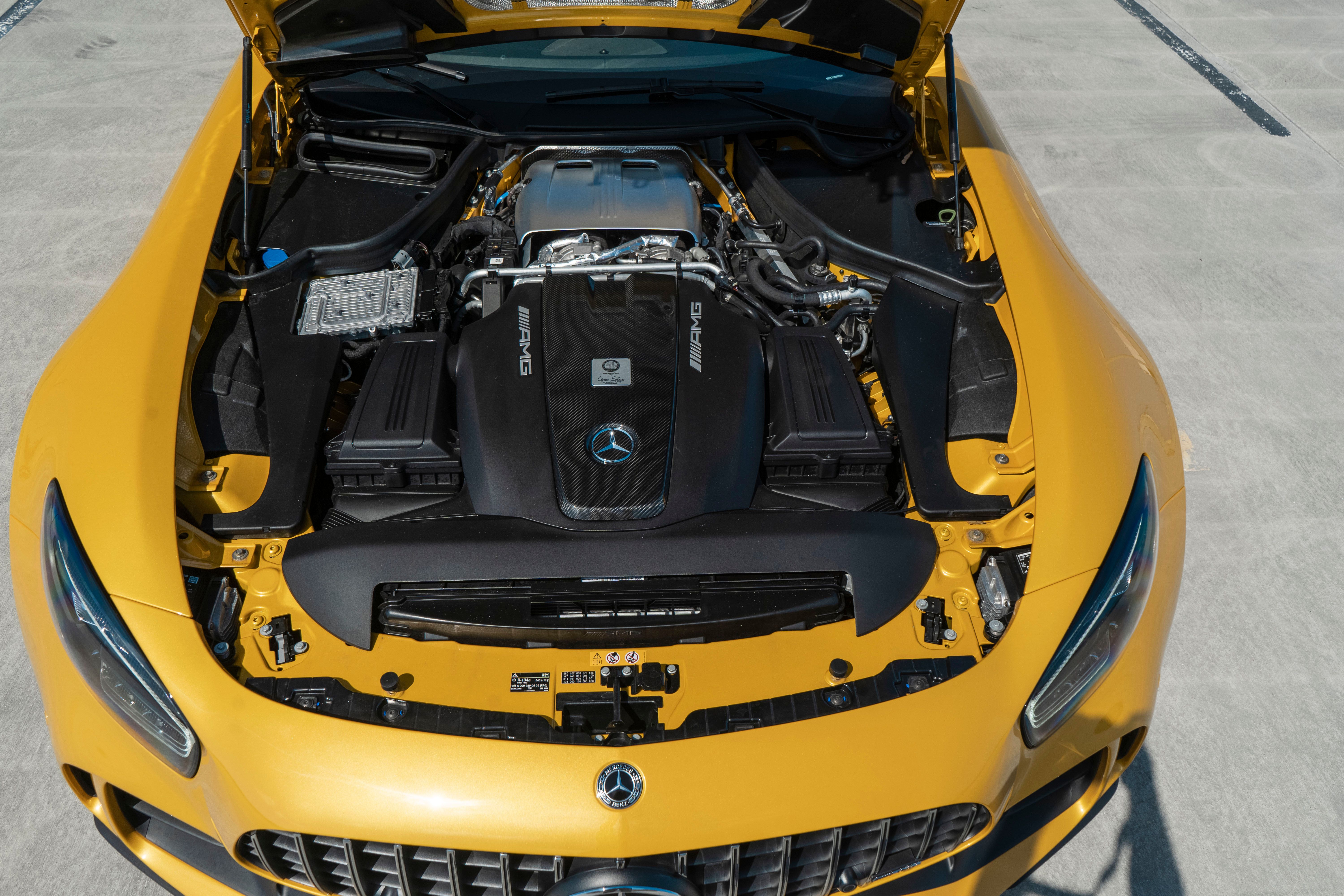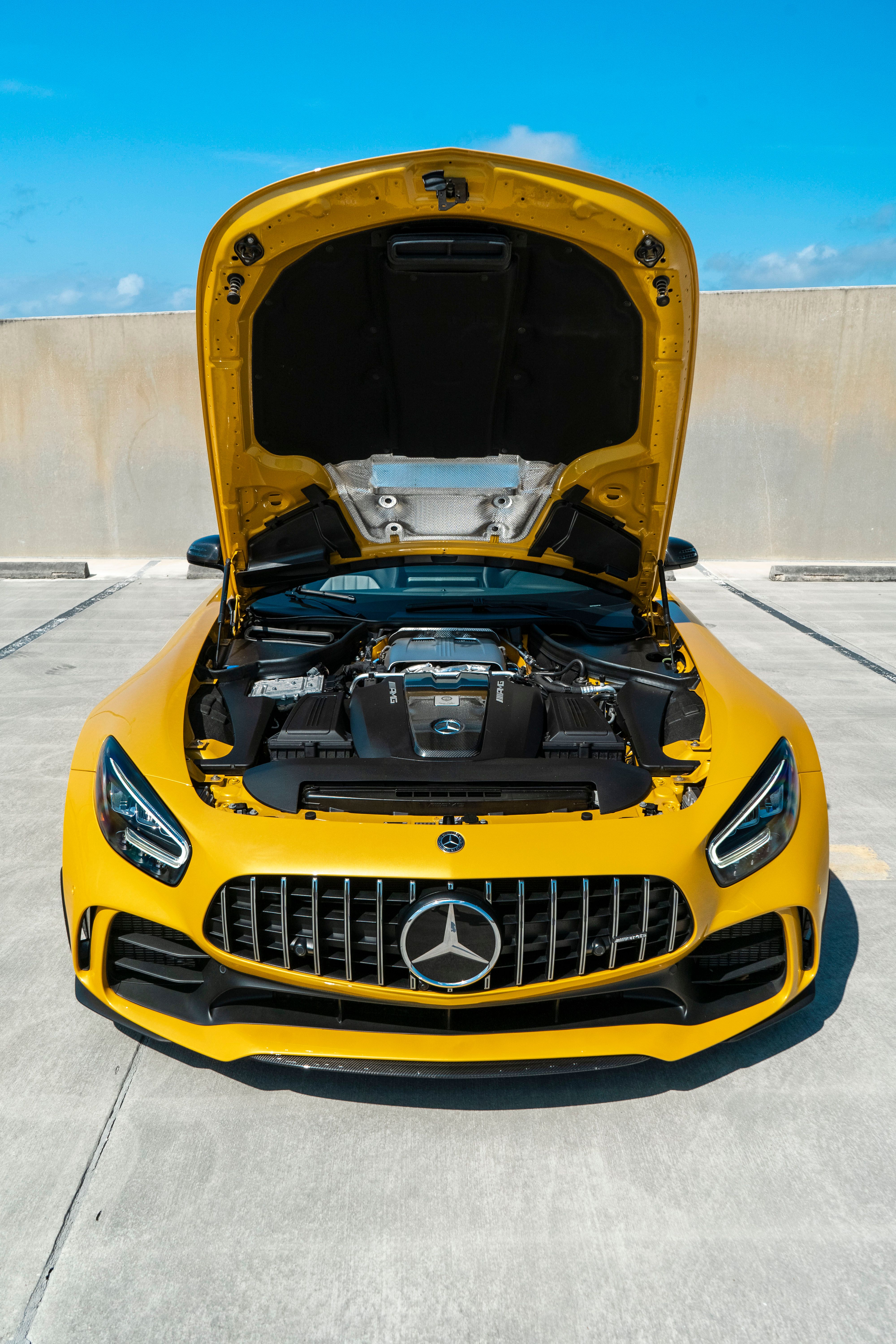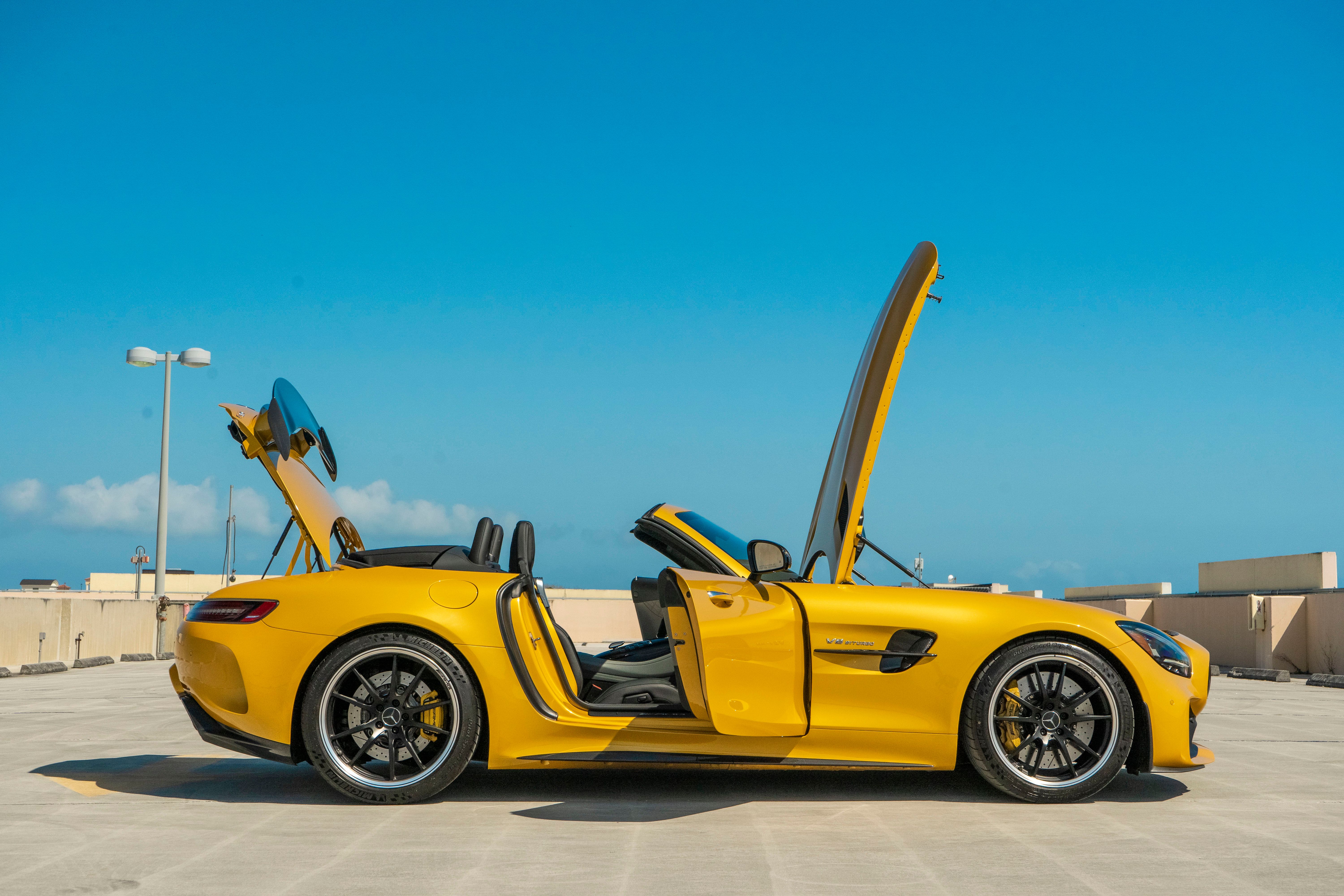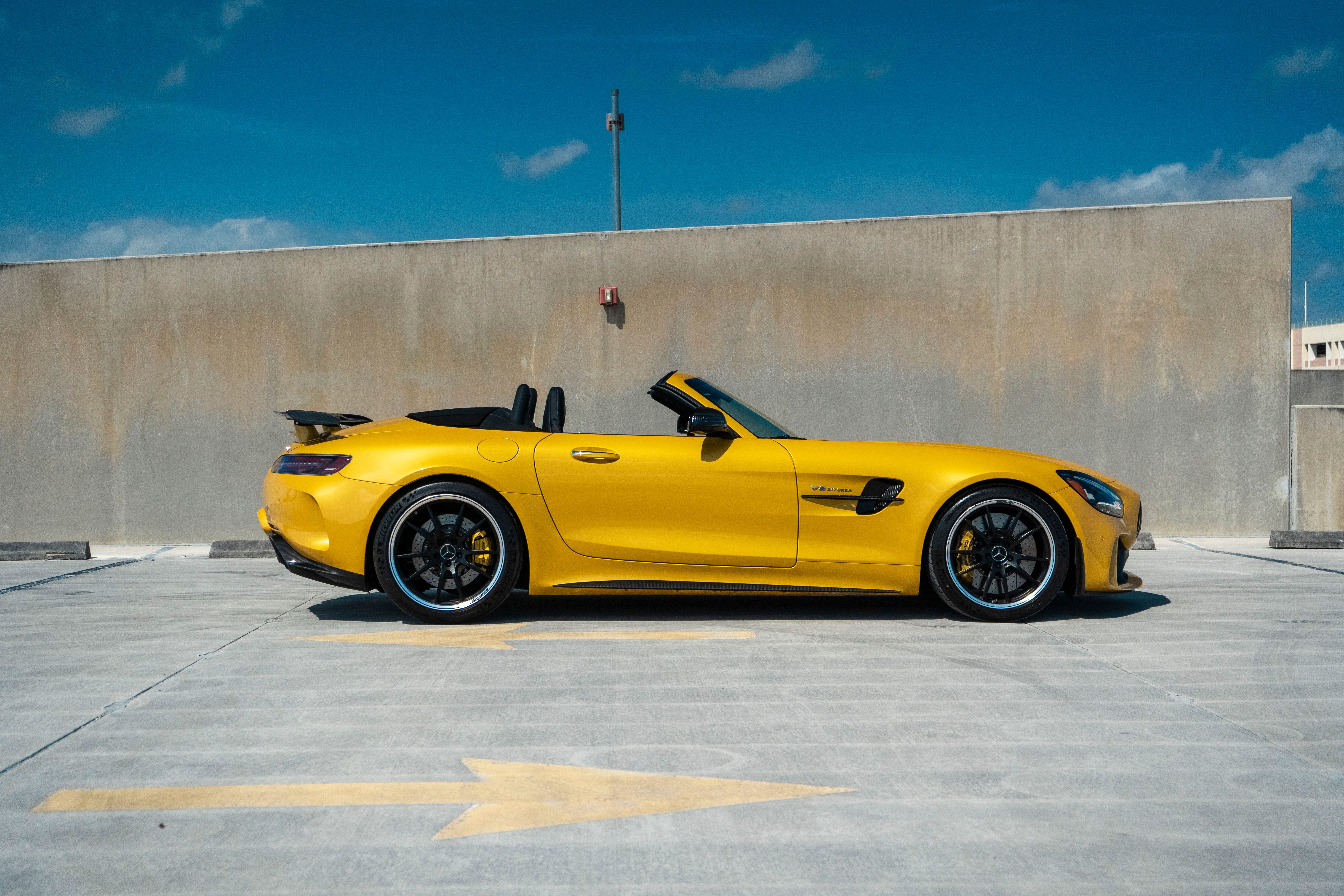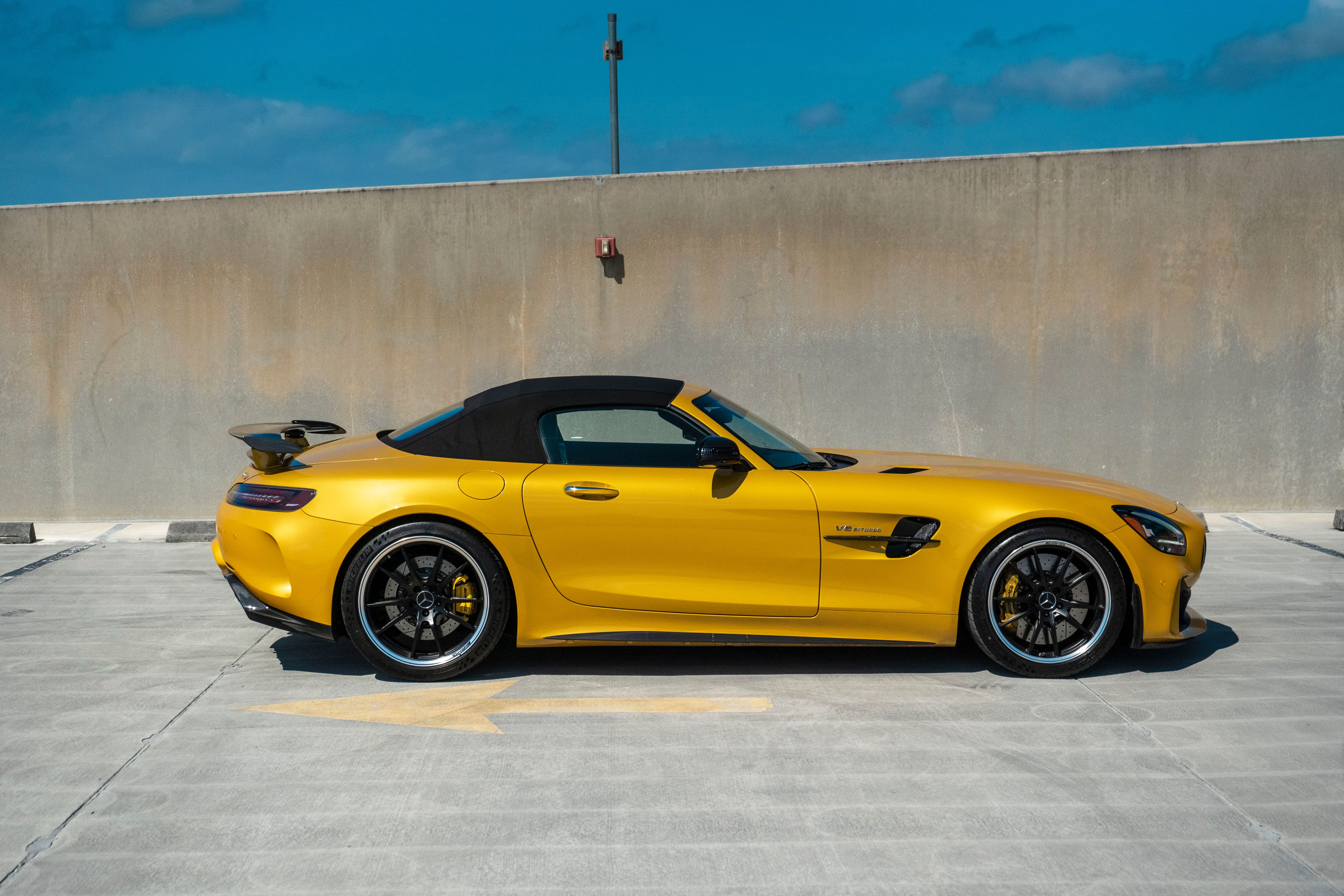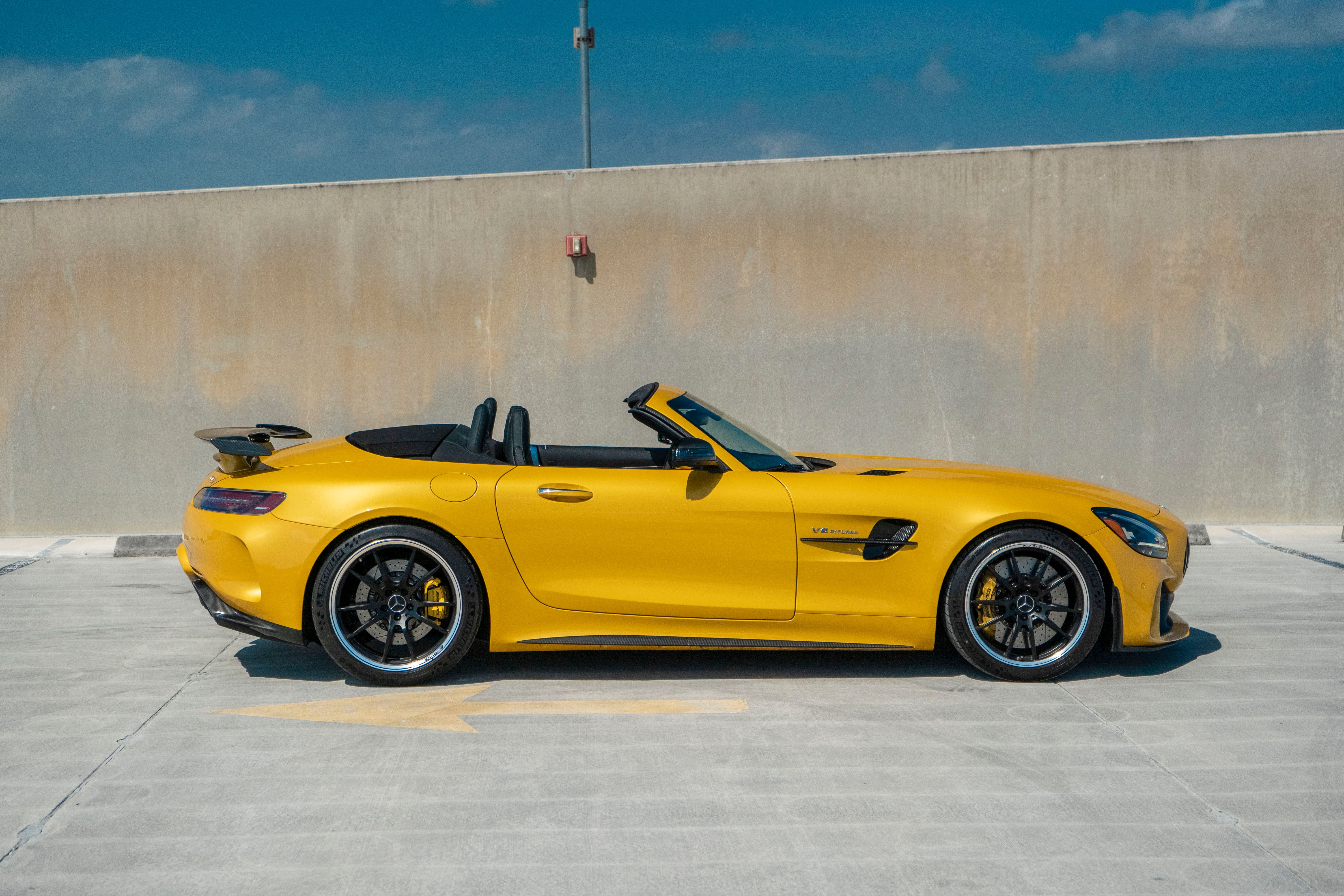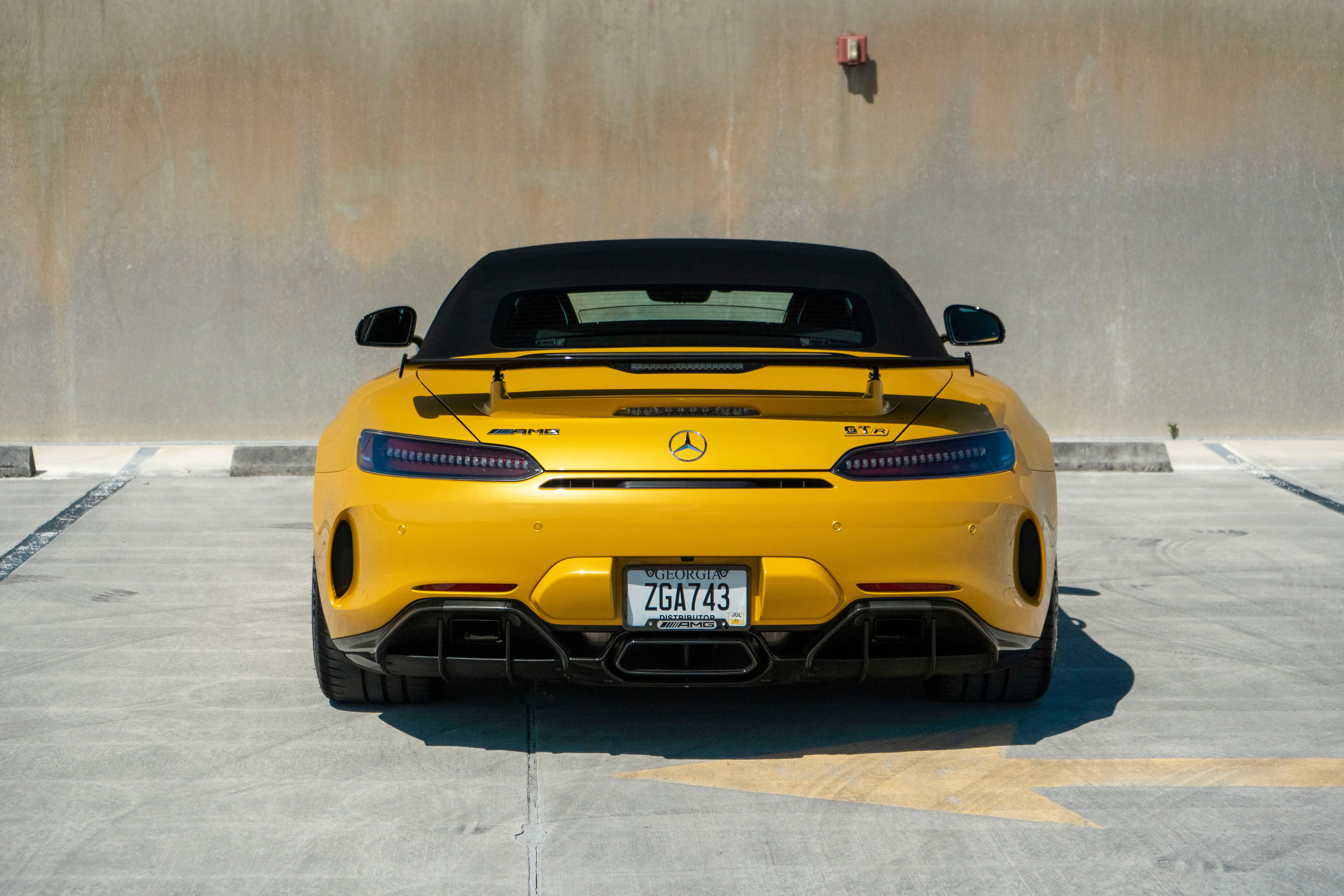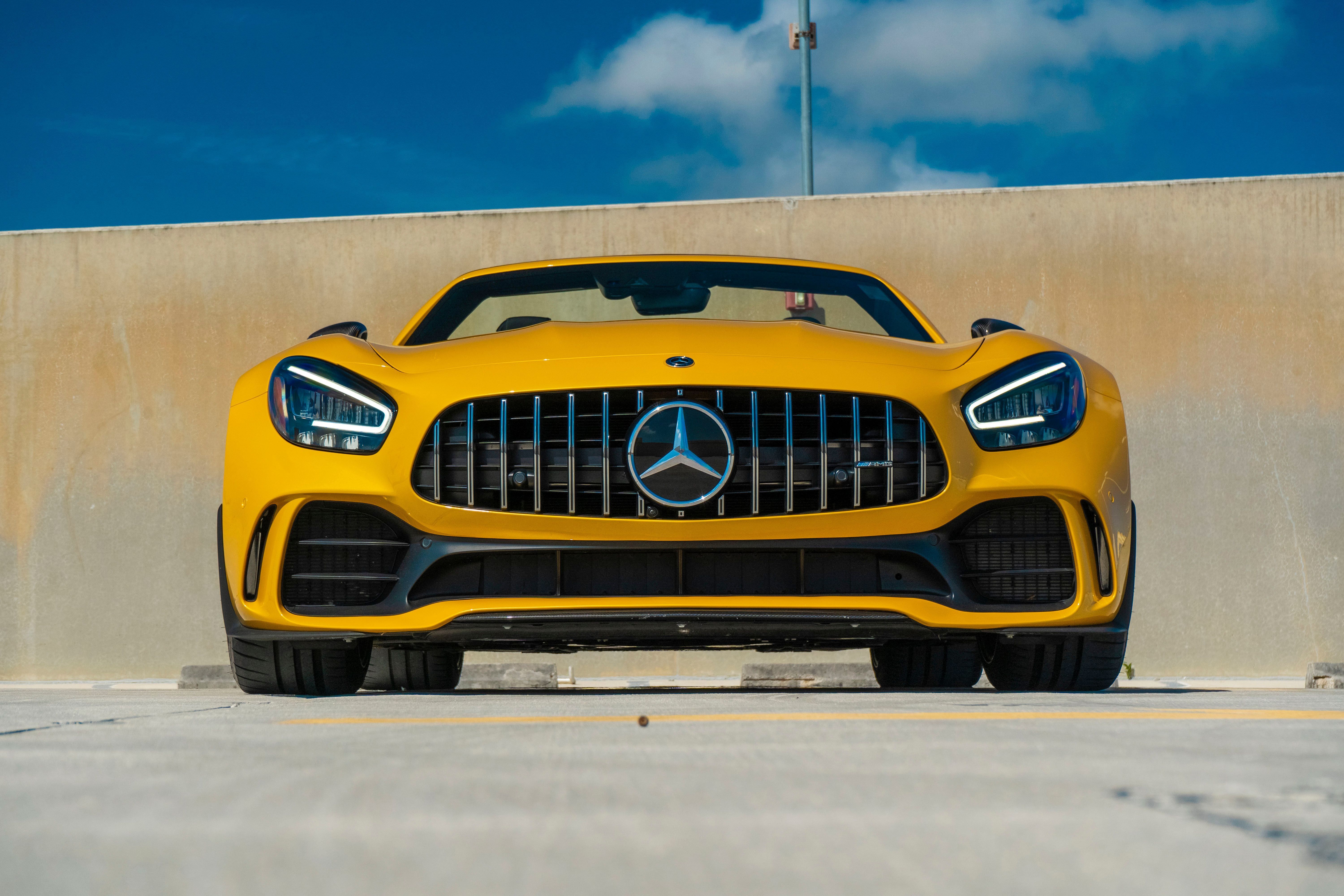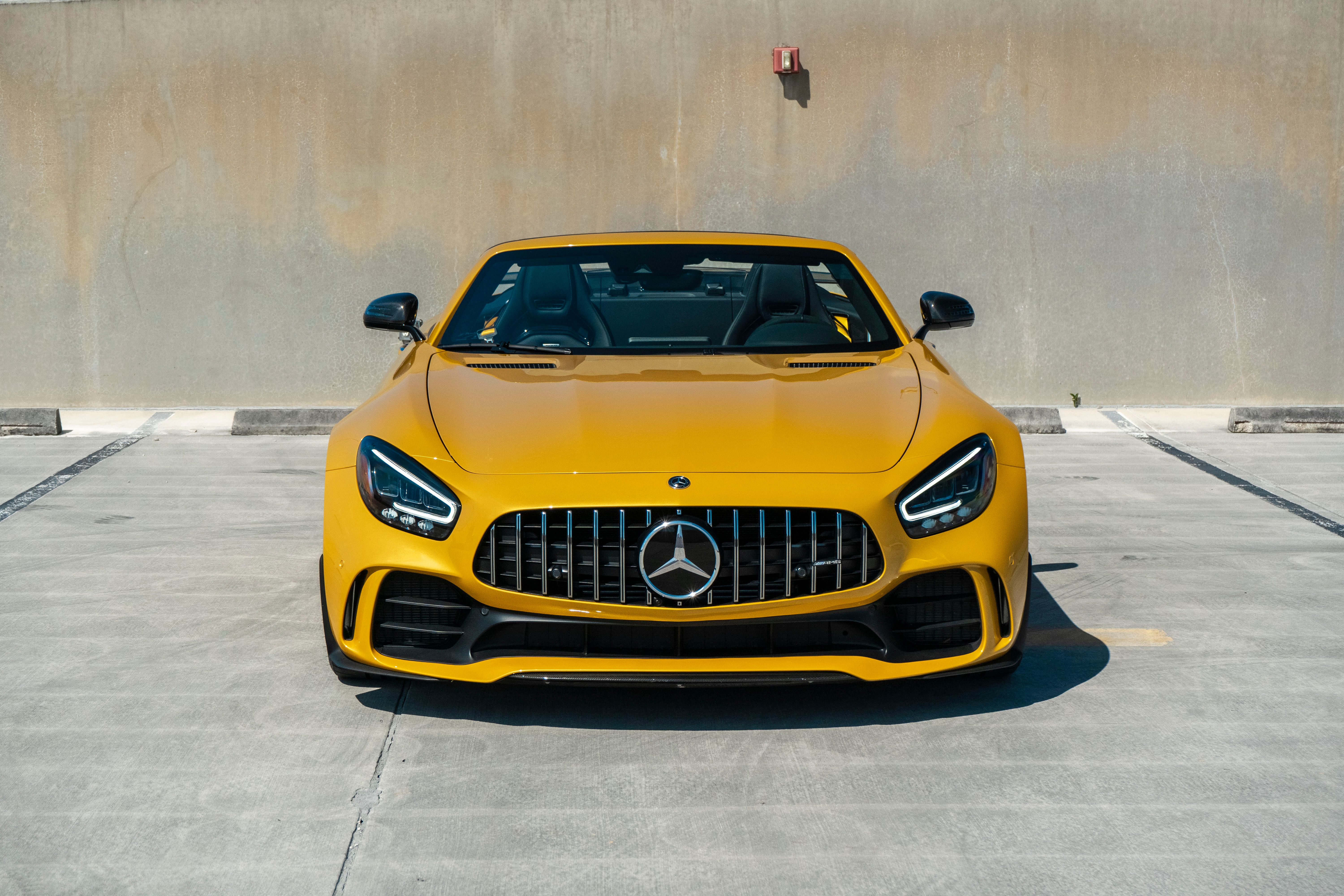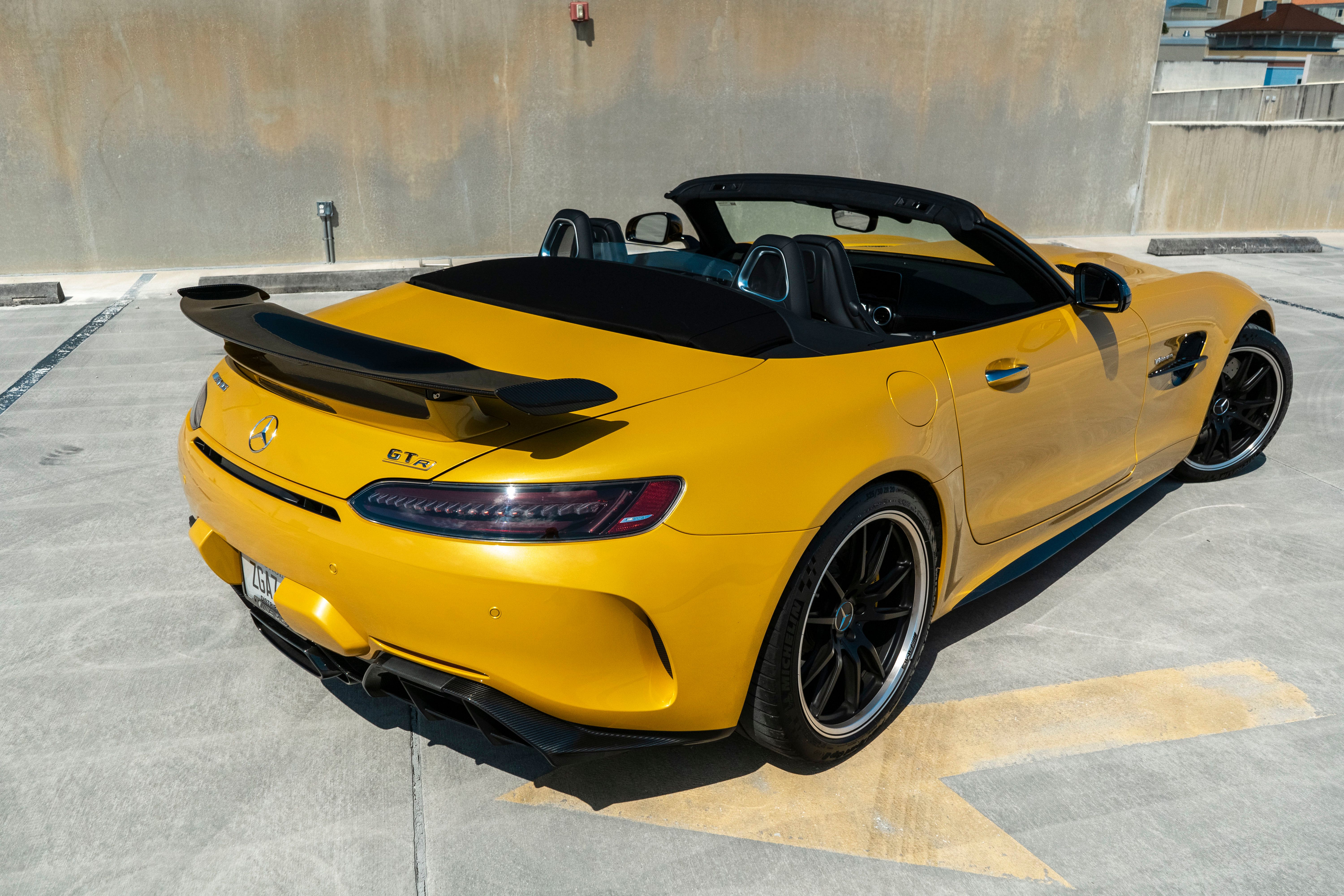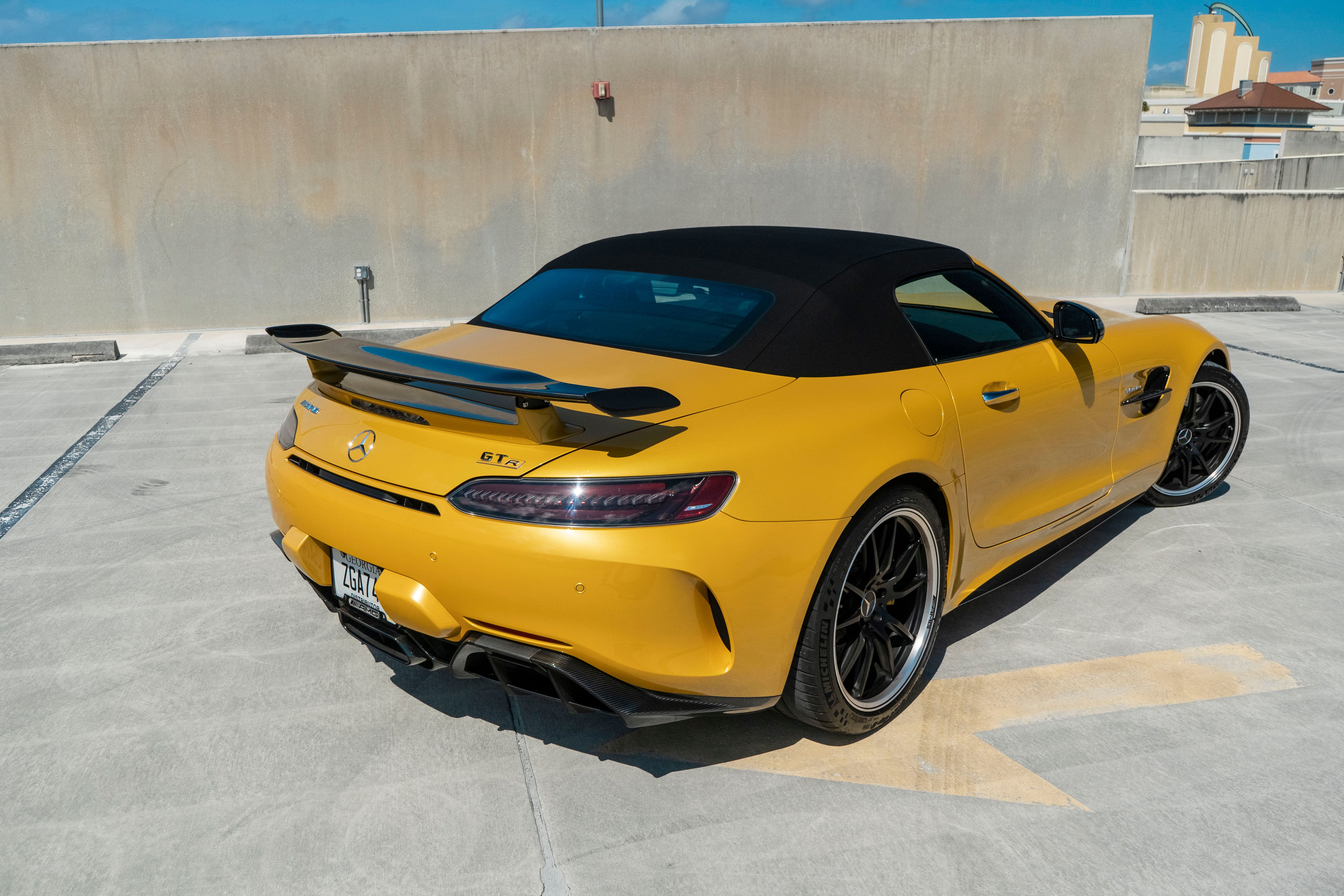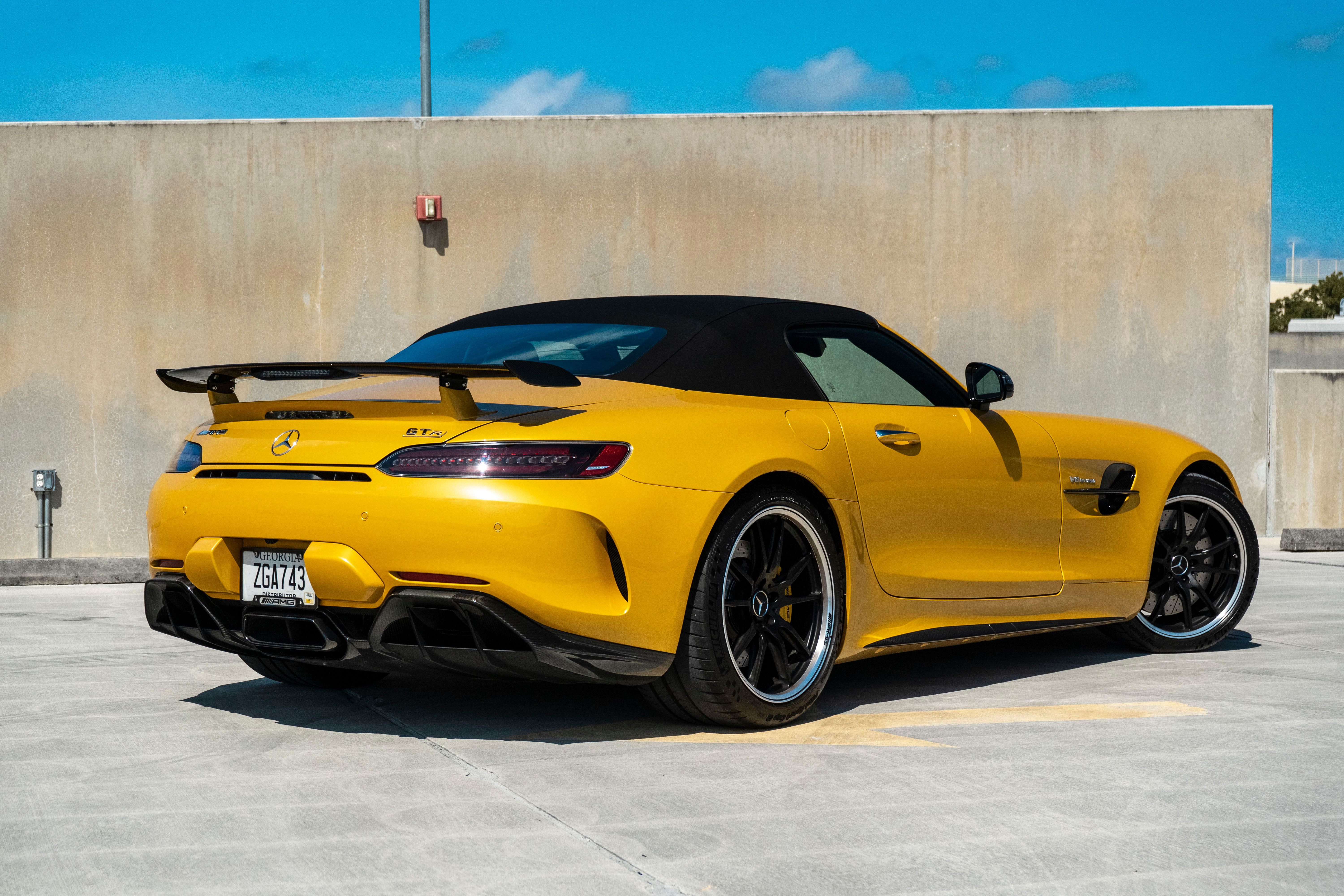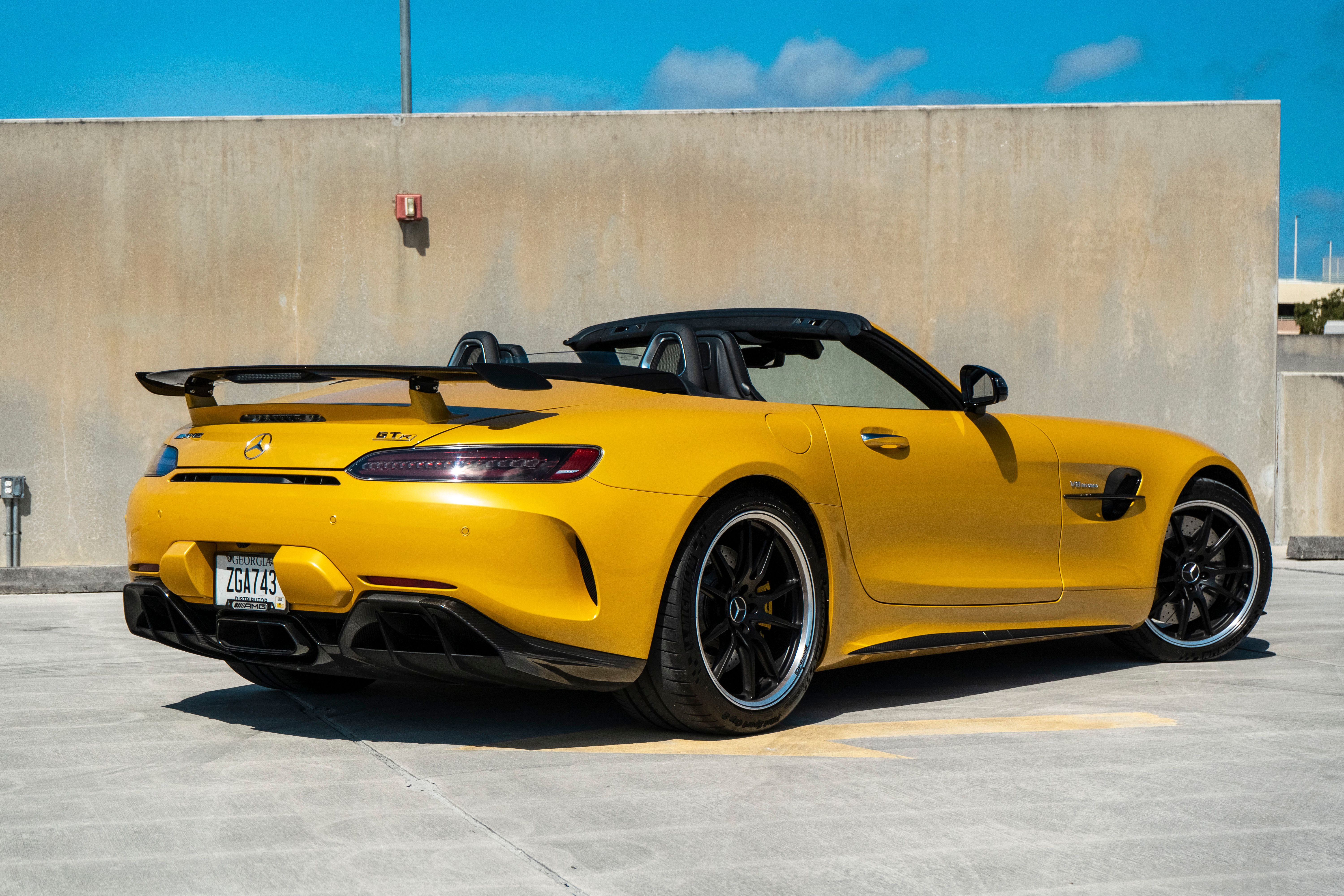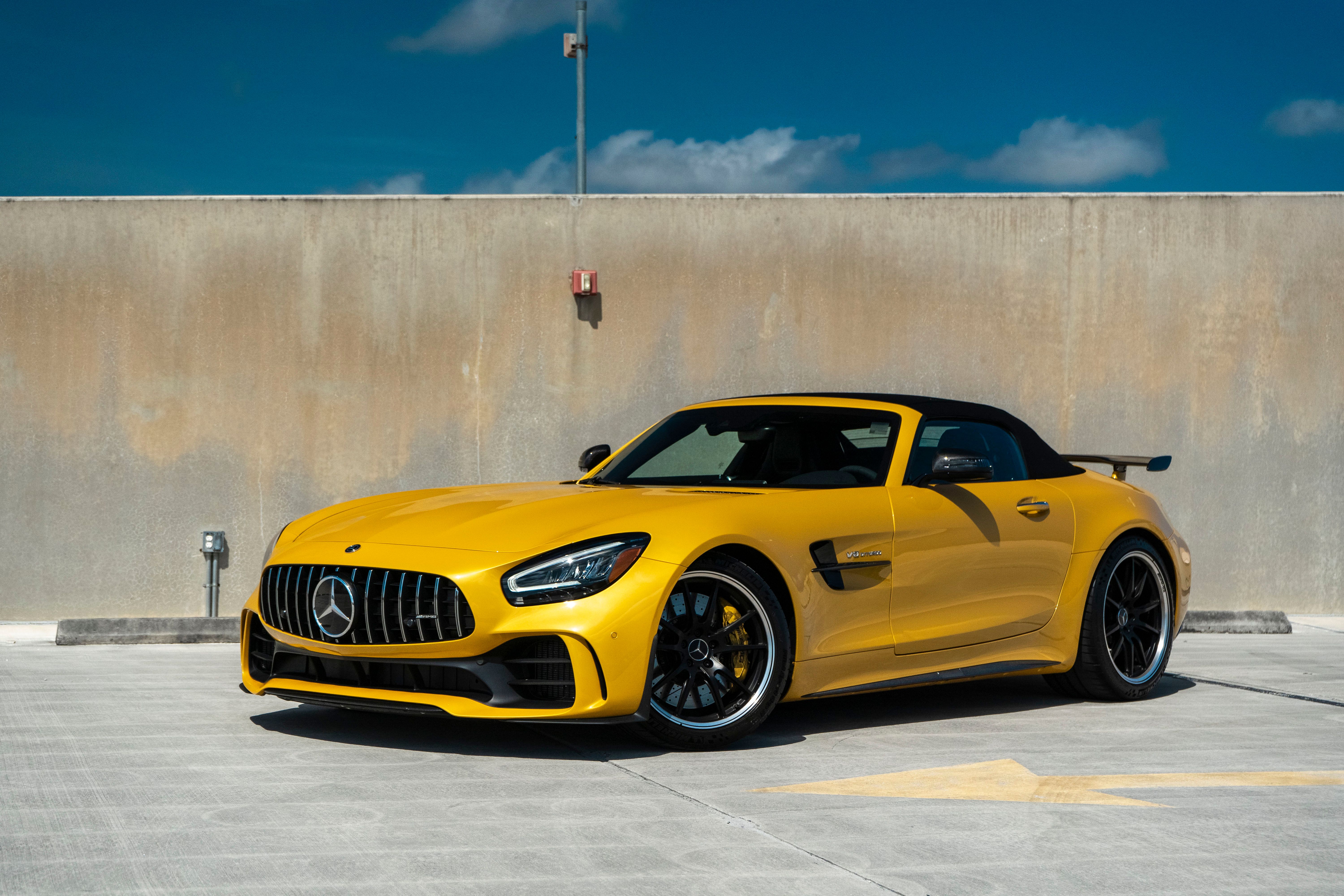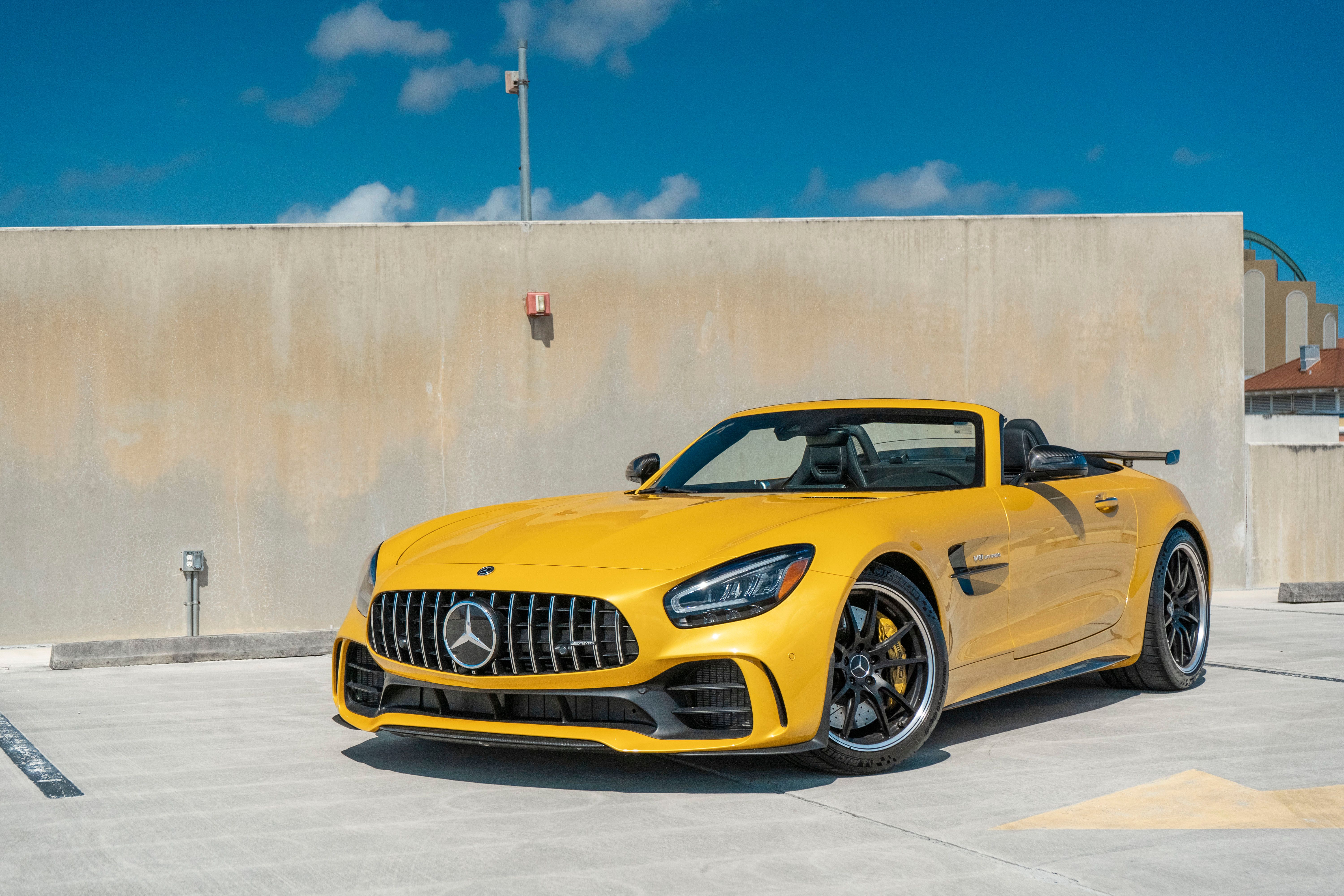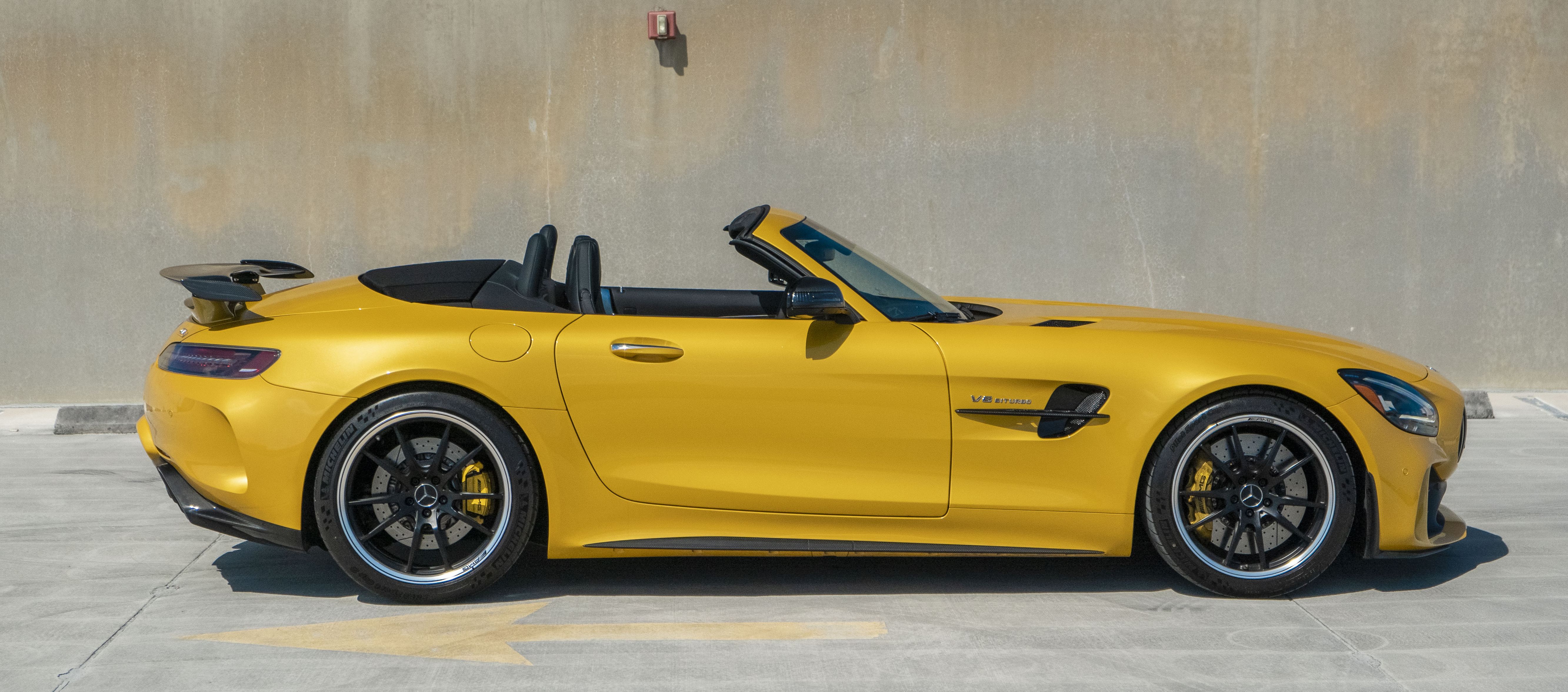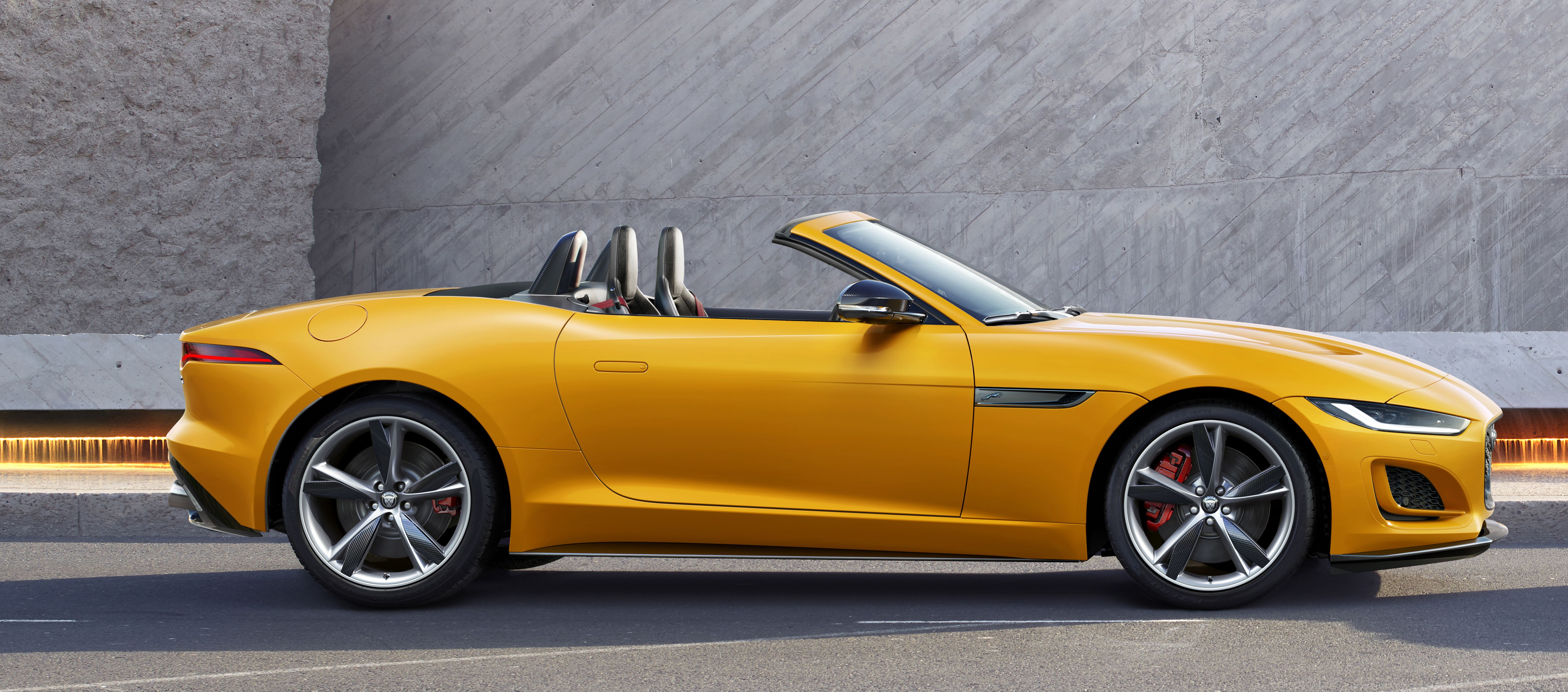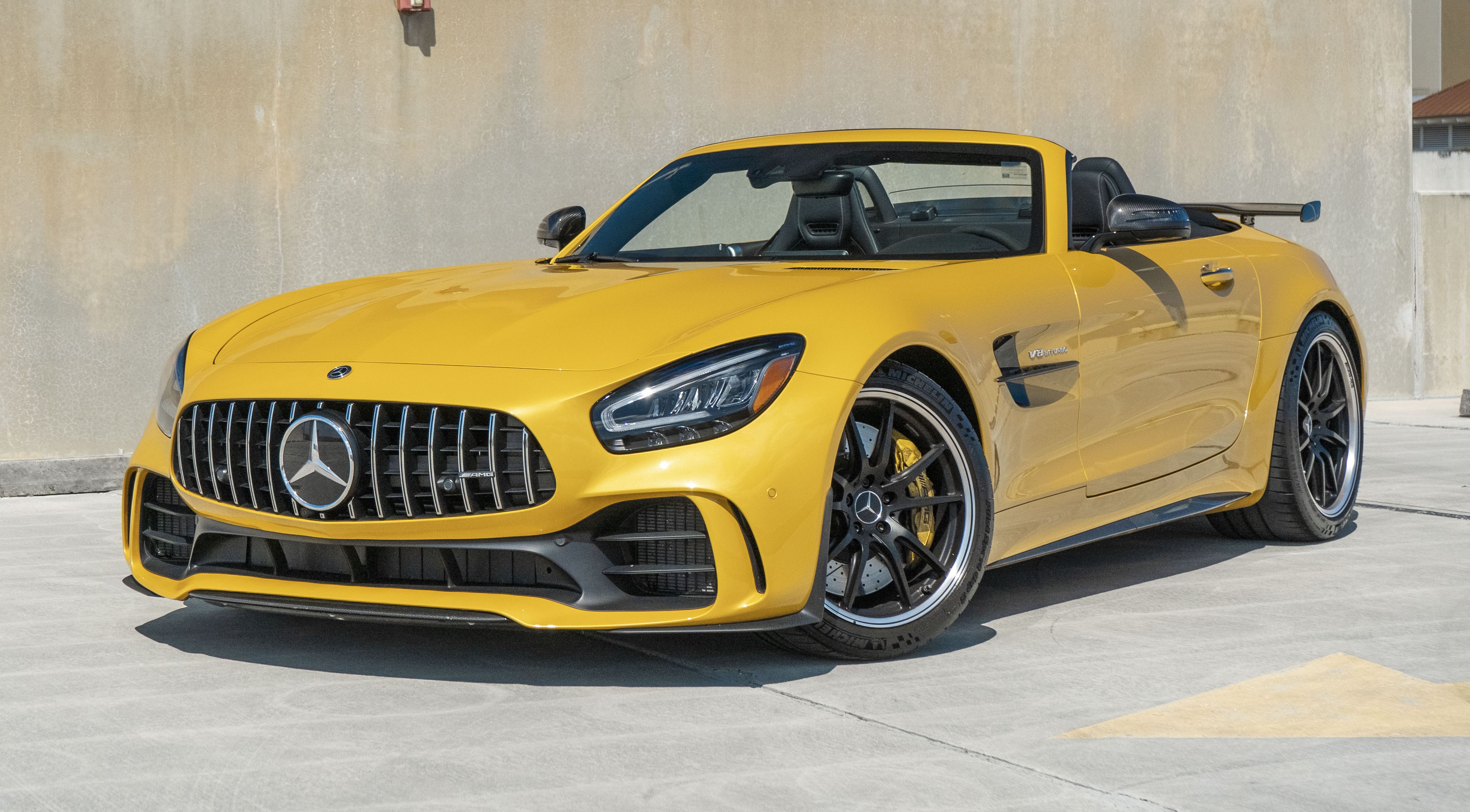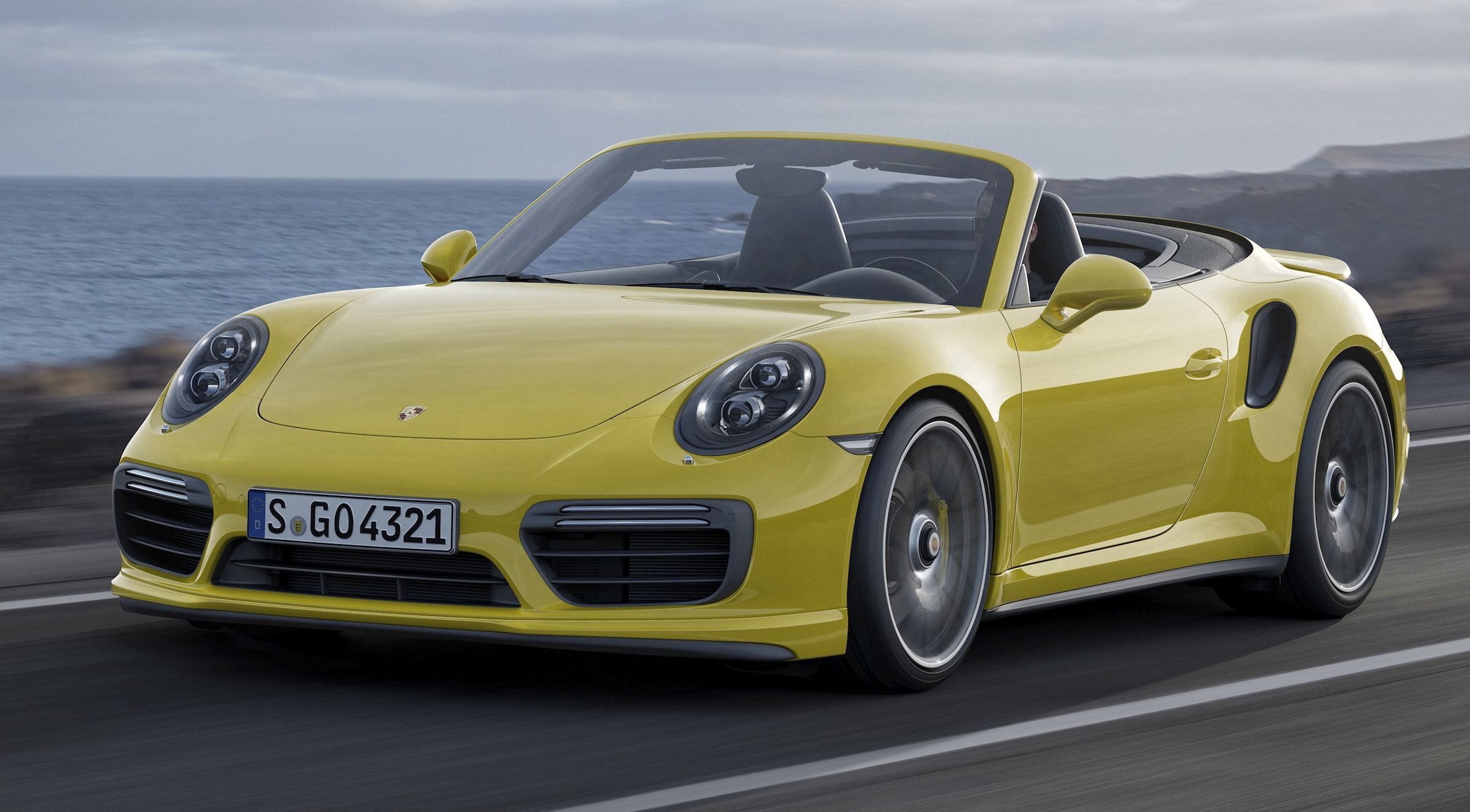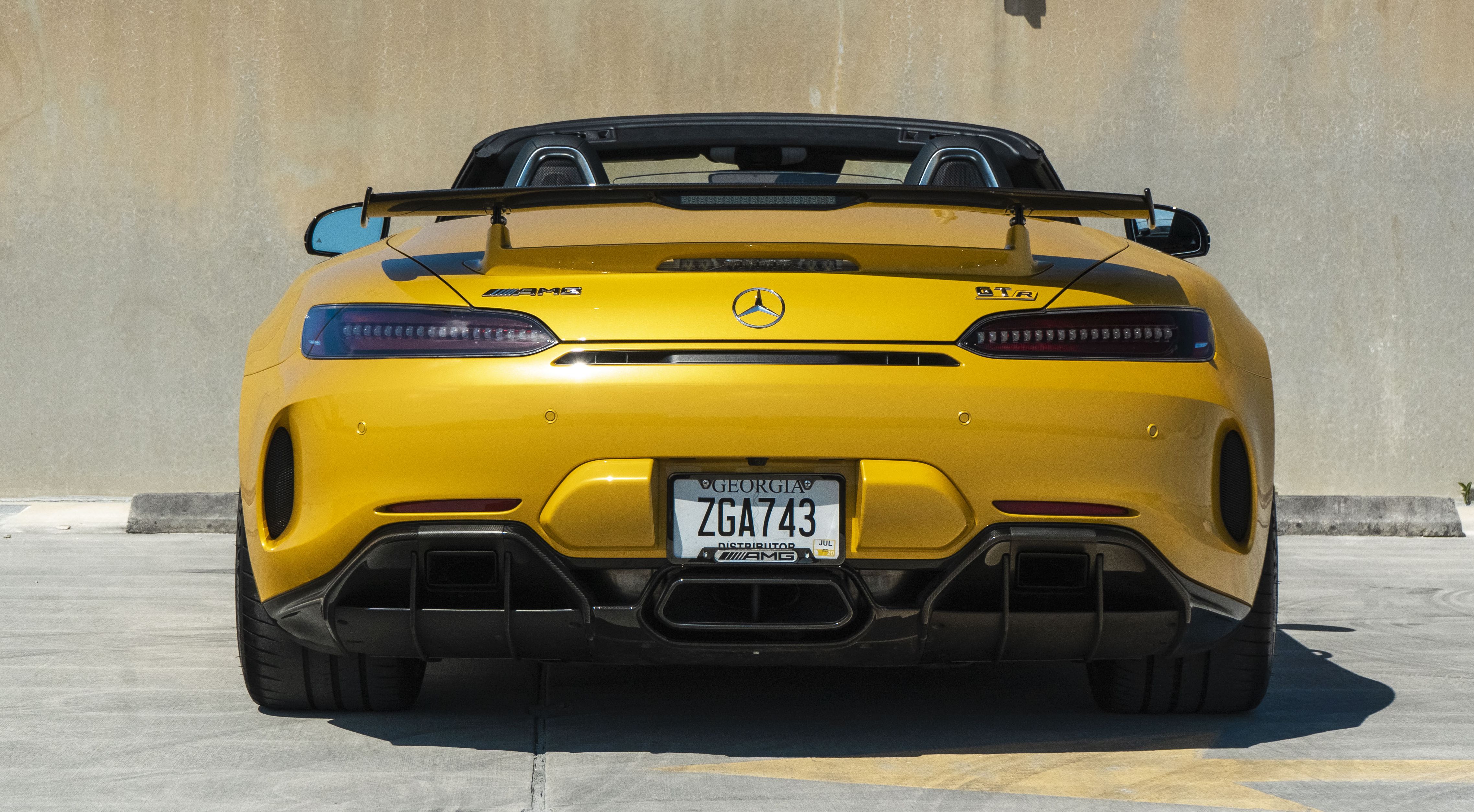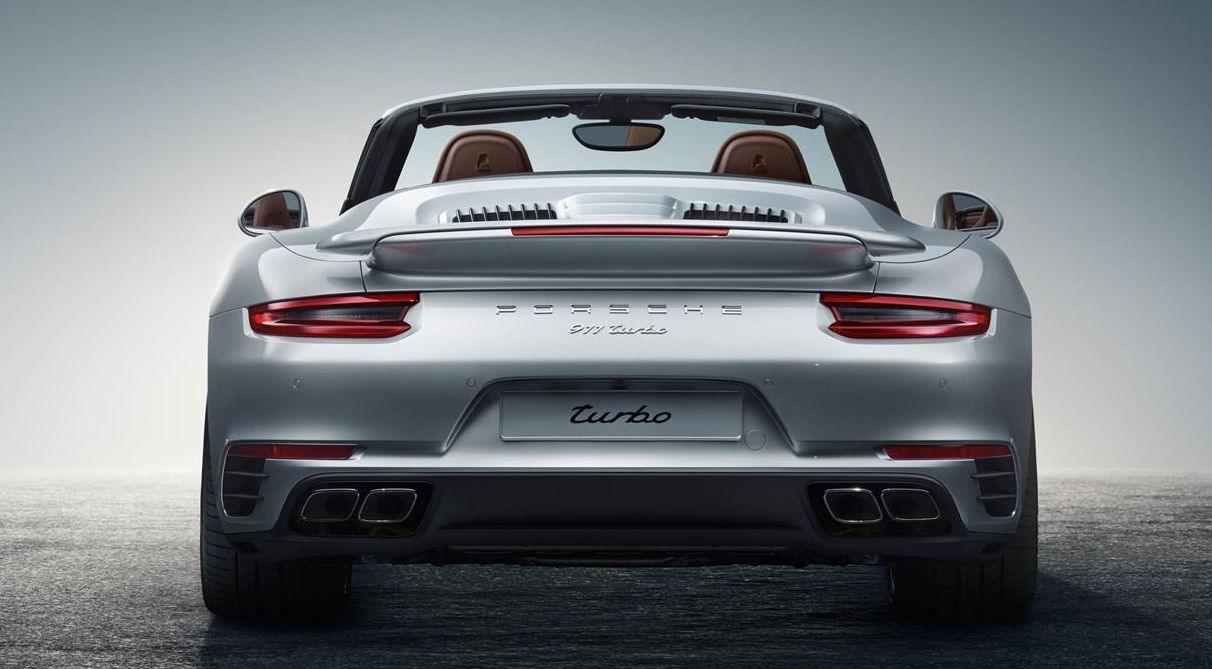The Mercedes-AMG GT R is a real looker with its long nose and swooped back cabin. Just looking at it evokes all the feelings you’d expect from a precision-built, six-figure machine that bears both the AMG and Mercedes logo. It’s an impressive car, to say the least, but what happens when you get behind the wheel of one of the 750 GT R Roadsters that will be produced? Does it still evoke that same high-end sports car feeling? Does it still feel like it’s ready for the track from the moment you sit down in the seat? Does it drive any different compared to the coupe it is based on? Well, we spent a week with the AMG GT R, and we’ve set out to answer all those questions and more.
2020 Mercedes-AMG GT R Roadster - Driven Review and Impressions
- Make: Array
- Model: 2020 Mercedes-AMG GT R Roadster - Driven Review and Impressions
- Engine/Motor: V8
- Horsepower: 577
- Torque: 516
- [do not use] Vehicle Model: Array
What’s It Like to Live with the Mercedes-AMG GT R Roadster?
The AMG GT R Coupe has the role of staring as Mercedes’ and AMG’s flagship model, while the GT R Roadster is a limited-production version without the roof. The transition from coupe to Roadster wasn’t an easy one, but from the offset, AMG did everything just right. That overly long snout and rear-sitting cabin are indicative of the 4.0-liter V-8s position behind the rear axle, something that is emphasized even more in the Roadster as you feel the wind whip through at speed as you confidently and courageously conquer bends. The engine note is of specific importance here, but it’s never too loud or annoying.
When you’re out and about, you’ll definitely get some attention. After all, the AMG GT R Roadster is one of the most illustrious pieces of eye candy on the road. With all the power under the hood, you might find you’re self both eager and anxious to give it the business every now and then, but you still have to be careful as the GT R Roadster can get away from you quite easy – that’s just the nature of the beast. If you’ve never owned a car of this caliber, you’ll probably find yourself overly observant and analytical of where you park – something that’s understandable when you pay out a minimum of $190,000 for a sports car.
This, my friends, is just the tip of the iceberg, though. The AMG GT R Roadster has a lot of good traits, but there are also some bad traits as well.
Mercdes-AMG GT R Roadster Powertrain and Performance
The AMG GT R Roadster is powered by the same 4.0-liter V-8 as the rest of the AMG GT lineup and, like the coupe it’s derived from, it delivers 577 horsepower and 516 pound-feet of torque. This puts in on par with a lot of amazing sports cars out there, so throughout this review, we’re going to compare it to the equally powerful but significantly less expensive Jaguar F-Type R Roadster and the more expensive but rear-engined Porsche 911 Turbo Cabriolet.
This diversity is important, though, as the GT R Roadster really doesn’t have a direct competitor if you look at every single aspect – price, power output, straight-line performance, availability, etc. While the competitors offer AWD, the GT R Roadster is offered in RWD – something that increases the fun factor but can also make it a little more challenging to drive. It also falls short in the fuel economy department, but we’re not sure that’s really an issue when it comes to a car like this.
Mercedes-AMG GT R Roadster Specifications
|
Mercedes-AMG GT R Roadster |
|
|---|---|
|
Engine |
4.0-Liter Biturbo V-8 |
|
Transmission |
7-Speed DCT |
|
Horsepower |
577 HP |
|
Torque |
516 LB-FT |
|
Driveline |
RWD |
|
Fuel |
Premium Gasoline |
|
Fuel Economy |
15/20/17 |
|
Suspension |
4-Wheel Independent |
|
Steering |
Variable Ratio Power Assisted |
|
Turning Circle |
39.7 Feet |
|
Front Tire Size |
275/35ZR19 |
|
Rear Tire Size |
325/30ZR20 |
|
0-60 MPH |
3.5 Seconds |
|
Top Speed |
197 MPH |
How Fast is the Mercedes-AMG GT R Roadster?
According to Mercedes, the AMG GT R Roadster can blast to 60 mph in as little as 3.5 seconds and will reach a top speed of 197 mph if you push it to the limit. That’s the same sprint time you’ll get in the GT R Coupe and just 1mph slower in terms of top speed.
How Fast Can the Mercedes AMG GT R Roadster Get to 60 MPH?
The Mercedes-AMG GT R Roadster can hit 60 mph in as little as 3.5 seconds. Two of its main competitors, the Jaguar F-Type R Convertible and the Porsche 911 Turbo Cabriolet, can make the same sprint in 3.5 seconds and 3.0 seconds, respectively. We’re still waiting on the 992-gen 911 Turbo Carbio to make it to dealers, so there’s a good chance it will be just a tad bit faster when that happens.
It should be noted that during our week with the AMG GT R Roadster, we were able to meet the 3.5-second sprint time on a regular basis and, every now and then, we were able to get to 60 mph in 3.4 seconds.
What is the Mercedes-AMG GT R’s Top Speed?
The Mercedes-AMG GT R Roadster tops out at 197 mph if you give it the business for long enough. In comparison, the Jaguar F-Type R Convertible will fall short in the long run at 186 mph while the Porsche 911 Turbo Cabriolet beats it at 198 mph. We suspect that the 992-gen 911 Turbo Cabrio could push its top speed to 200 mph, so you can consider in the hand’s down winner for both sprint performance and top speed performance.
What Kind of Fuel Economy Does the AMG GT R Roadster Get?
Unfortunately, the AMG GT R Roadster, while good at many things, doesn’t excel at being fuel-efficient, with ratings coming in at 15 mpg in the city, 20 mpg on the highway, and 17 mpg combined. It actually performs worse in this regard than bother the F-Type R Convertible and the 911 Turbo Cabriolet, the latter of which beats out the GT R by 3 or 4 mpg in every type of driving scenario.
Mercedes-AMG GT R Roadster Fuel Economy
|
City |
Highway |
Combined |
|
|---|---|---|---|
|
Mercedes-AMG GT R Roadter |
15 |
20 |
17 |
|
Jaguar F-Type R Convertible |
15 |
23 |
18 |
|
Porsche 911 Turbo Cabriolet |
19 |
24 |
21 |
What Is the Mercedes-AMG GT R Roadster Like to Drive?
The AMG GT R Roadster is a real blast to drive. On the offset, it’s comfortable, sporty, and with the top down, you really feel like royalty. Put the pedal to the floor, and you’ll zip to 60 mph in 3.5 seconds or faster (we managed to do it in 3.4 a couple of times,) and the engine never really feels like its starving for injection as you effortlessly cruise past the speed limit. This type of performance, however, comes at a cost. For those of you that are inexperienced with performance cars or aren’t familiar with RWD might find the GT R Roadster to evoke a small sense of anxiety. I wouldn’t go so far as to say it suffers from Mustang syndrome, but if you’re not paying attention or overthink something, the rear end will get away from you in a heartbeat.
With that said, however, I don’t want to scare you too much. The standard Michelin Pilot Sport 2 tires are impressively grippy and do cling to the pavement quite well. The seven-speed DCT (sorry, no manual transmission here) is one of the fastest-shifting transmissions on the market today. The shifts, even under heavy throttle, feel instantaneous, and there’s never a real feeling of sluggishness between shifts. The standard carbon-ceramic brakes are as equally effective in bringing you to a stop and don’t feel too grabby most of the time.
In terms of driving dynamics, you’ll find that the AMG GT R Roadster can straighten corners as good or better than any other car on the market. You might find that the steering feels a little too light, but part of that has to do with the variable-ratio power steering that is computer-controlled based on a number of different factors. The new steering wheel available in the 2020 model does help thanks to improved grip points and better access to various drive modes.
Most of this sounds really good, but the AMG GT R Roadster isn’t perfect. The suspension, for example, is off the back-breaking variety. Everything feels great on long, smooth roads and, admirably, the car exhibits very little body roll, but you’ll find the car is far from pleasurable to drive on rough roads – just don’t do it. It might be perfect for track use, but on longer journeys on less than ideal roads, you’ll find that you can document every imperfection the road throws at you. Over time, it becomes extremely exhausting. The same can be said for the AMG Performance seats, which are okay in the short-term, but you’ll feel every minute of longer journeys during and afterward. They aren’t that supportive, are razor-thin, and I felt like I was constantly searching for the right adjustment. It’s based on a track car, no doubt, but there are definitely way more comfortable seats out there.
Make no mistake; the AMG GT R is thrilling to drive most of the time, just be prepared to put up with its few shortcomings when it comes to longer trips or daily driving.
What Makes the AMG GT R Roadster Stand Out Inside?
For the most part, the GT R Roadster’s cabin is a direct transplant from the coupe that it’s based on. Like the coupe, it serves as a gap between the standard AMG GT and the GT3 race car, and you’ll find the same 10.25-inch infotainment display, wide-center console, and the race-inspired AMG seats that are both good and bad (see our experience above.) You can choose between three Nappa Leather Colors, including:
-* Saddle Brown and Black
-* Macchiato Beige and Black
-* Silver Pearl and Black
It should be noted that the carbon fiber trim bits are standard, while you can opt for the same Airscarf technology found in the convertible E-Class and S-Class. So, what unique features can you look out for? Well, the dash features a special inscription to denote which number of 750 models produced you’re in. Oh, you thought there was more to make it unique? Well, if you count the unlimited headroom with the top down, then I guess there are two things, but that’s the true extent of it.
How Much Cargo Room Does the AMG GT R Roadster Have?
The AMG GT R Coupe has just 10.1 cubic-feet of cargo room, but because the Roadster has a folding soft-top, some of that cargo room had to be used for extra components. And, it’s not a nice drop in cargo room either, as going for the Roadster means you’ll only get 5.8 cubic-feet of cargo room. In comparison, the Jaguar F-Type R Convertible has 7.3 cubic-feet while the 911 Turbo (991-Gen) has just 4.4 cubic-feet.
Infotainment
For 2020, the AMG GT R and GT R Roadster were upgraded with a new 10.3-inch multimedia-center display. However, you still have to control the screen via external controls, but there is an optional touchpad controller that you can pay a little extra for. The highlight of the infotainment system is the AMG Track pace app. With this app, you can record more than 80 different metrics while driving (things like speed, acceleration, etc.) that are recorded ten times every second. It will also record your lap times and their respective differences. The big thing we really liked is that the system displays old and new readings in red or green to indicate faster or slower, so you can keep track of what you’re doing with a simple glance – a huge improvement in terms of safety.
What is AMG Dynamics?
The different AMG DYNAMICS modes are named "Basic," "Advanced," "Pro," and "Master." The drive program selection indicated on the multimedia display now shows the new AMG DYNAMICS symbol with the relevant additional term instead of the previous ESP® symbol.
-* "Basic" is assigned to the "Slippery" and "Comfort" drive programs. Here the AMG GT demonstrates exceptionally stable handling characteristics with high yaw damping.
-* "Advanced" is activated in the "Sport" program. The AMG GT is then neutrally balanced. The lower yaw damping, lower steering angle requirement, and enhanced agility support dynamic maneuvers such as driving on winding country roads.
-* “Pro” (abbreviation for “professional”) is part of the “Sport+” program. In “Pro,” the driver receives even more assistance for dynamic driving maneuvers, while agility and precision are further enhanced when taking corners.
-* “Master” (only available for GT C, GT S, and GT R) is connected to the RACE drive program. "Master" mode is aimed at drivers who want to experience dynamism and the driving enjoyment on closed-off circuits. "Master" offers an extremely neutral vehicle balance, low steer angle requirement, and more agile steering. In this way, "Master" ensures maximum agility and fully exploits the dynamic potential.
Does the Mercedes-AMG GT R Roadster Have a Different Exterior?
As is the case with most coupes turned convertibles, the AMG GT R Roadster features very much the same body as the coupe, with the exception of a few notable differences. The most obvious difference is the soft top that, surprisingly, keeps the swept-back look of the coupe when in place. All of the same aerodynamic enhancements of the GT R coupe are present here from the front fascia, muscular hood, and bulky rear fenders, but the rear deck lid has been designed to accommodate soft top storage. All in all, the GT R Roadster, quite literally, a GT R coupe with a stowable soft-top. Nothing more, nothing less.
Is the Mercedes-AMG GT R Roadster Better Than the Jaguar F-Type R Convertible?
|
|
ids=892920,892921 |
no_overlay=false |
before_label=Mercedes-AMG GT R Roadster |
after_label=Jaguar F-Type R Convertible> |
The Jaguar F-Type was updated for the 2020 model year, and the R Convertible got the same treatment. The exterior design is enhanced by thin, sleek headlights, a wider, lower grille, sizable front splitter, and blacked-out trim around the corner intakes. Like most cars in this segment, the side profile is identical below the beltline, but the F-Type R Convertible stands out thanks to the unique and elevated design of the rear quarter panels. Because of these, it almost has a supercar-like look in the rear in that the rear deck is actually below the muscular rear quarters.
The rear end is largely the same too, and now has the sleeker taillights and dominating rear diffuser with a quad-exhaust setup. However, due to the nature of the convertible, the F-Type has a different profile compared to the coupe. With the roof raised, it does look a lot like the coupe, but with the roof down, it looks somewhat awkward. The interior is quite sporty, though, and the inboard technology does allow for configurable dynamics. Maybe not to the extent as that of the AMG GT R, though. The seats in the F-Type R are much more comfortable than the GT R, but this also isn’t meant to be a track car, so it’s definitely more suitable for longer distances.
Under the hood sits a 5.0-liter that’s good for 575 horsepower (2 less than the GT R) and an equal torque rating of 516 pound-feet. The kicker here is that the F-Type R is friendlier to drive, and you experience far less of a chance of losing control thanks to the AWD system. This system enables the F-Type R Convertible to run to 60 mph in 3.5 seconds (equal to the GT R), but it falls short in top speed at 186 mph, 11 mph short of its competitor. The real kicker is that for nearly identical performance (outside of top speed, of course) is that the F-Type R Convertible has an MSRP of $105,900 – nearly $84,000 less than the GT R Roadster’s $189,750 MSRP.
Mercedes-AMG GT Roadster vs. Jaguar F-Type R Convertible
|
Mercedes-AMG GT R Roadster |
Jaguar F-Type R Convertible |
Engine |
4.0-Liter Biturbo V-8 |
5.0-Liter Supercharged V-8 |
|
|---|---|---|---|---|---|
|
Transmission |
7-Speed DCT |
8-Speed ZF Automatic |
|||
|
Horsepower |
577 HP |
575 HP |
|||
|
Torque |
516 LB-FT |
516 LB-FT |
|||
|
Driveline |
RWD |
AWD |
|||
|
Fuel |
Premium Gasoline |
Premium Gasoline |
|||
|
Fuel Economy |
15/20/17 |
15/23/18 |
|||
|
Suspension |
4-Wheel Independent |
4-Wheel Independent |
|||
|
Steering |
Variable Ratio Power Assisted |
Electric Power Assisted |
|||
|
Turning Circle |
39.7 Feet |
37.1 Feet |
|||
|
Front Tire Size |
275/35ZR19 |
295/30R20 |
|||
|
Rear Tire Size |
325/30ZR20 |
295/30R20 |
|||
|
0-60 MPH |
3.5 Seconds |
3.5 Seconds |
|||
|
Top Speed |
197 MPH |
186 MPH |
|||
|
Price |
$189,750.00 |
$105,900.00 |
Read our full review on the 2021 Jaguar F-Type.
Is the Mercedes-AMG GT R Roadster Better Than the Porsche 911 Turbo Cabriolet?
|
|
ids=892922,892923 |
no_overlay=false |
before_label=Mercedes-AMG GT R |
after_label=Porsche 911 Turbo Cabriolet> |
The Porsche 911 it the epitome of German sports cars, and the 911 turbo kicks that up a notch. And, if you want the open-air feeling, the 911 Turbo convertible will scratch that itch and then some. In terms of appearance, it’s a real looker. Thanks to the unique design of the 911, none of the iconic look is lost when it is transformed into a convertible. The front has that slightly evolved and still always iconic look with the round headlights and wide open air intakes while the side profile looks almost like a convertible VW Beetle that’s been stretched out a bit.
|
|
ids=892924,892925 |
no_overlay=false |
before_label=Mercedes-AMG GT R |
after_label=Porsche 911 Turbo Cabriolet> |
The rear end is iconic Porsche through and through. You get the indented rear fascia, thin taillights with a connecting light bar, and the “look at me” rear spoiler with a high-mount brake light. Exactly the opposite of the Jaguar F-Type, the rear deck – or in this case, the engine cover) rises far above the rear quarters and almost sits as high as the seat headrest in the middle. The technology inside is largely on point with the GT R Roadster while the seats are far more comfortable.
As far as performance goes, the 911 Turbo Convertible is on point. The 3.8-liter flat-six is good for 580 horsepower and 516 pound-feet of torque – again, very similar to the AMG GT R. However, the 911 Turbo Convertible is nearly 100 pounds lighter and is able to get to 60 mph in just three seconds flat. Add in the fact that its top speed is 198 mph – 1 mph higher than the AMG GT R – and it feels like the 911 Turbo Convertible is the better buy, right? It’s certainly more comfortable, more iconic, and faster. But, there’s one big caveat – it has an MSRP of $203,000 - $14,000 more than the AMG GT R and just a hair short of $100,000 more than the F-Type R Convertible.
Mercedes-AMG GT Roadster vs. Jaguar F-Type R Convertible
|
Mercedes-AMG GT R Roadster |
Jaguar F-Type R Convertible |
Engine |
4.0-Liter Biturbo V-8 |
5.0-Liter Supercharged V-8 |
|
|---|---|---|---|---|---|
|
Transmission |
7-Speed DCT |
8-Speed ZF Automatic |
|||
|
Horsepower |
577 HP |
575 HP |
|||
|
Torque |
516 LB-FT |
516 LB-FT |
|||
|
Driveline |
RWD |
AWD |
|||
|
Fuel |
Premium Gasoline |
Premium Gasoline |
|||
|
Fuel Economy |
15/20/17 |
15/23/18 |
|||
|
Suspension |
4-Wheel Independent |
4-Wheel Independent |
|||
|
Steering |
Variable Ratio Power Assisted |
Electric Power Assisted |
|||
|
Turning Circle |
39.7 Feet |
37.1 Feet |
|||
|
Front Tire Size |
275/35ZR19 |
295/30R20 |
|||
|
Rear Tire Size |
325/30ZR20 |
295/30R20 |
|||
|
0-60 MPH |
3.5 Seconds |
3.5 Seconds |
|||
|
Top Speed |
197 MPH |
186 MPH |
|||
|
Price |
$189,750.00 |
$105,900.00 |
Read our full review on the 2019 Porsche 911 Turbo Cabriolet.

